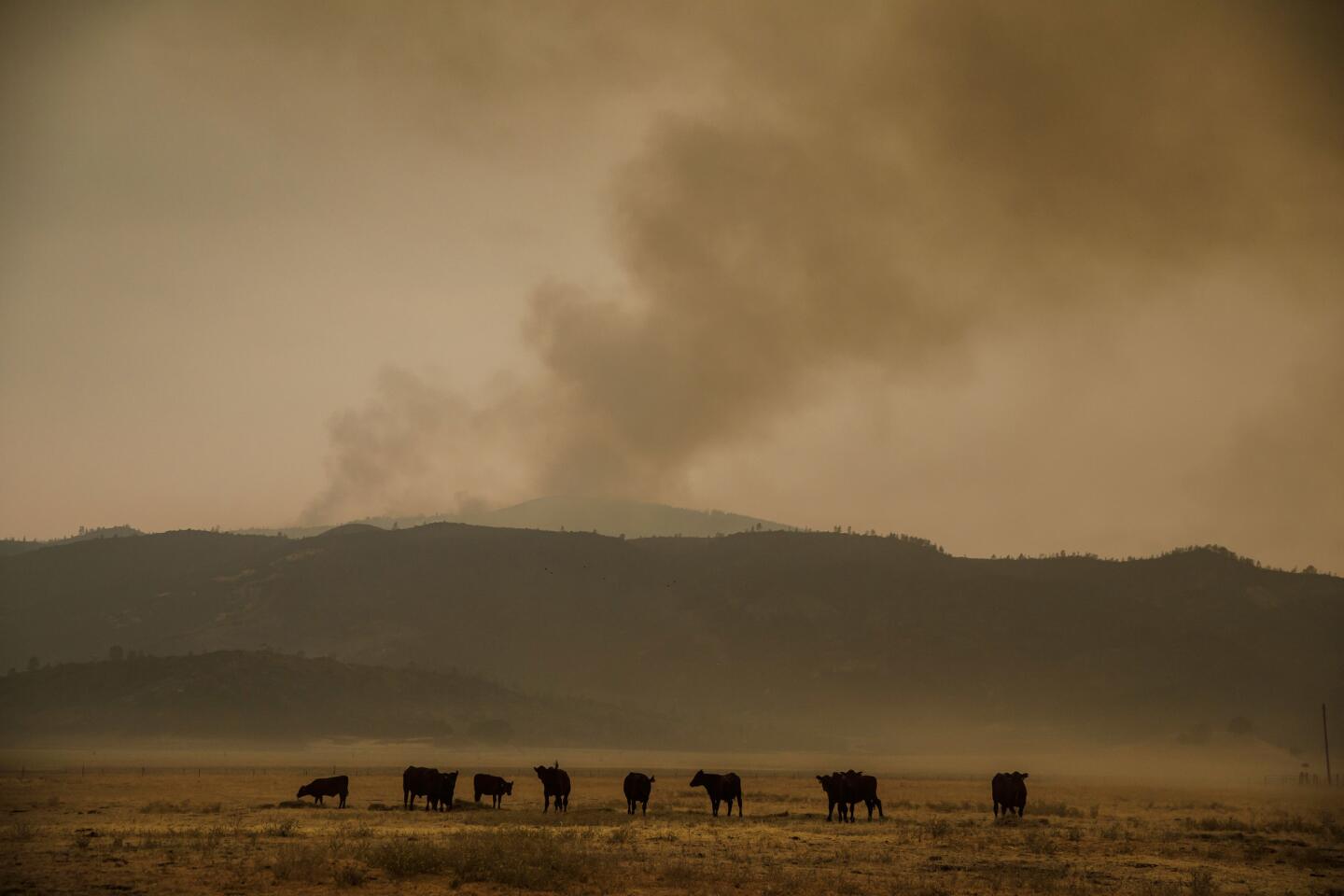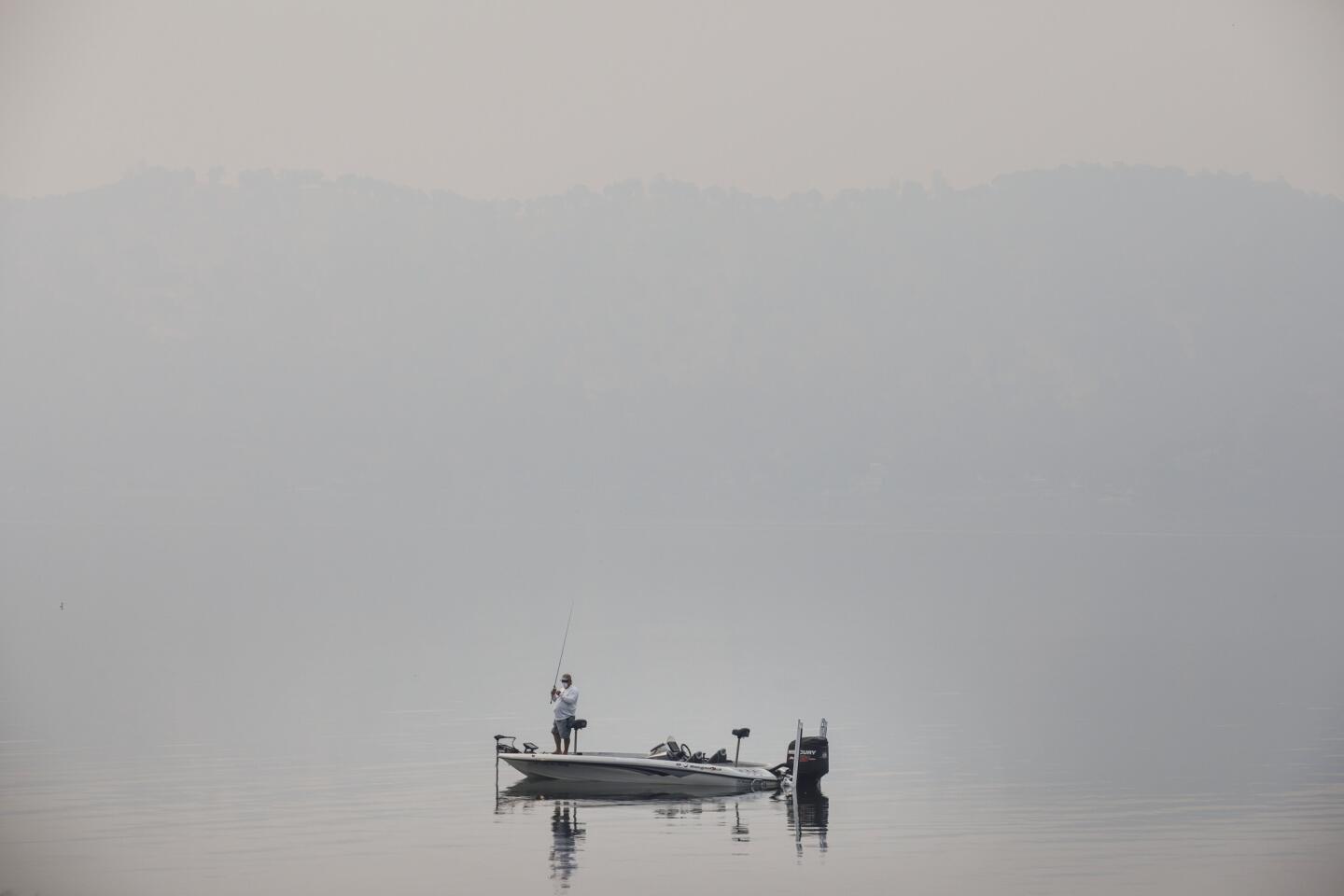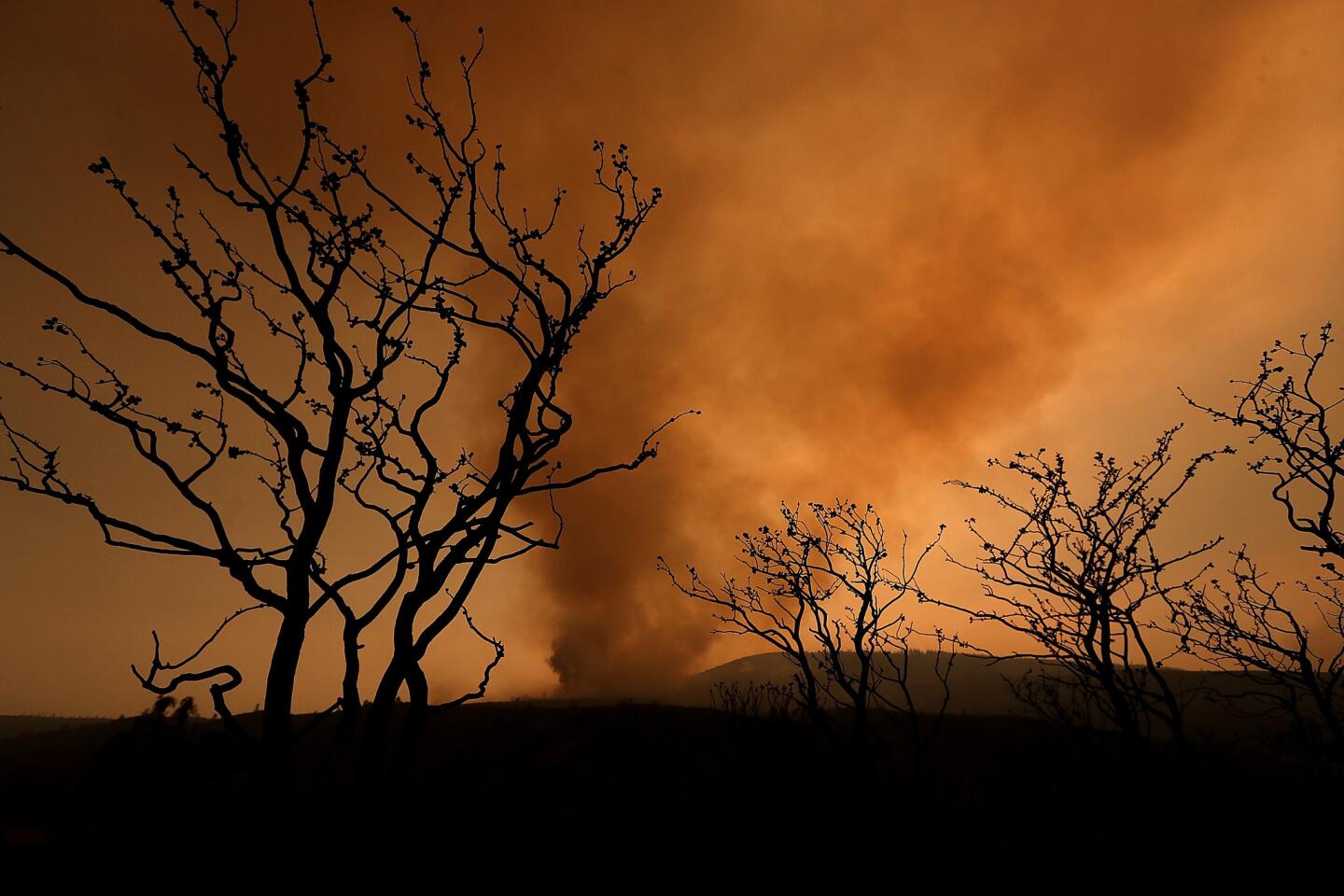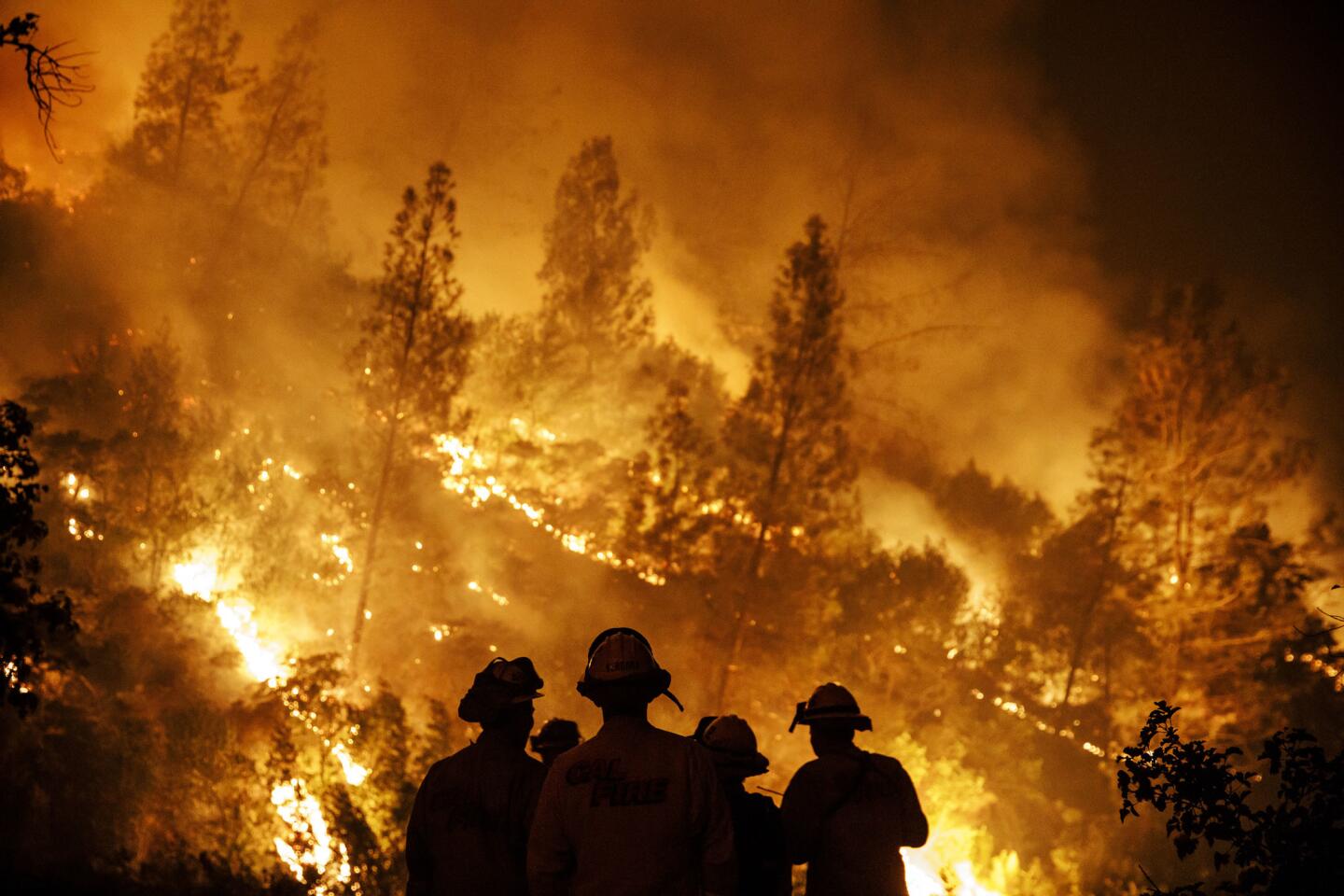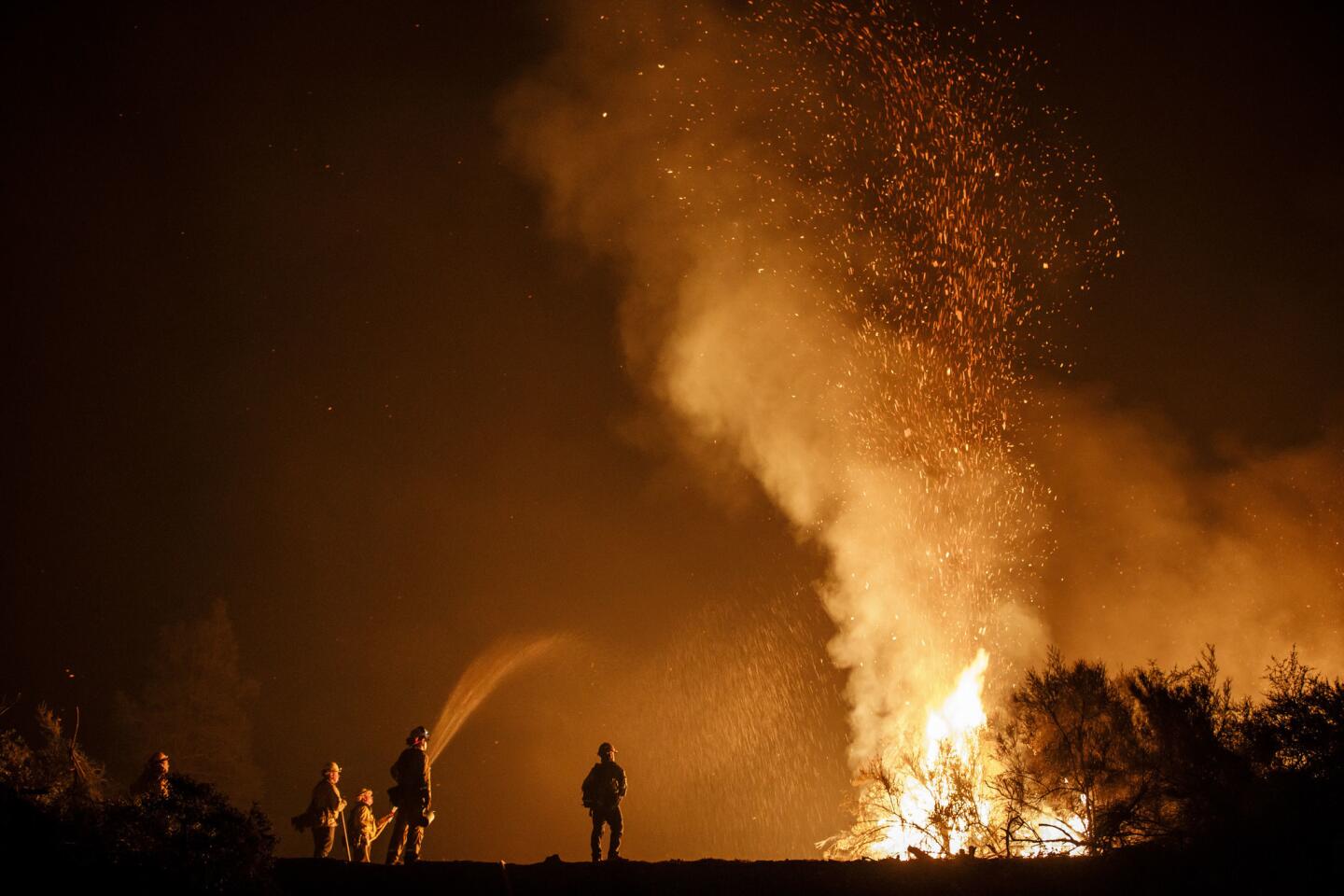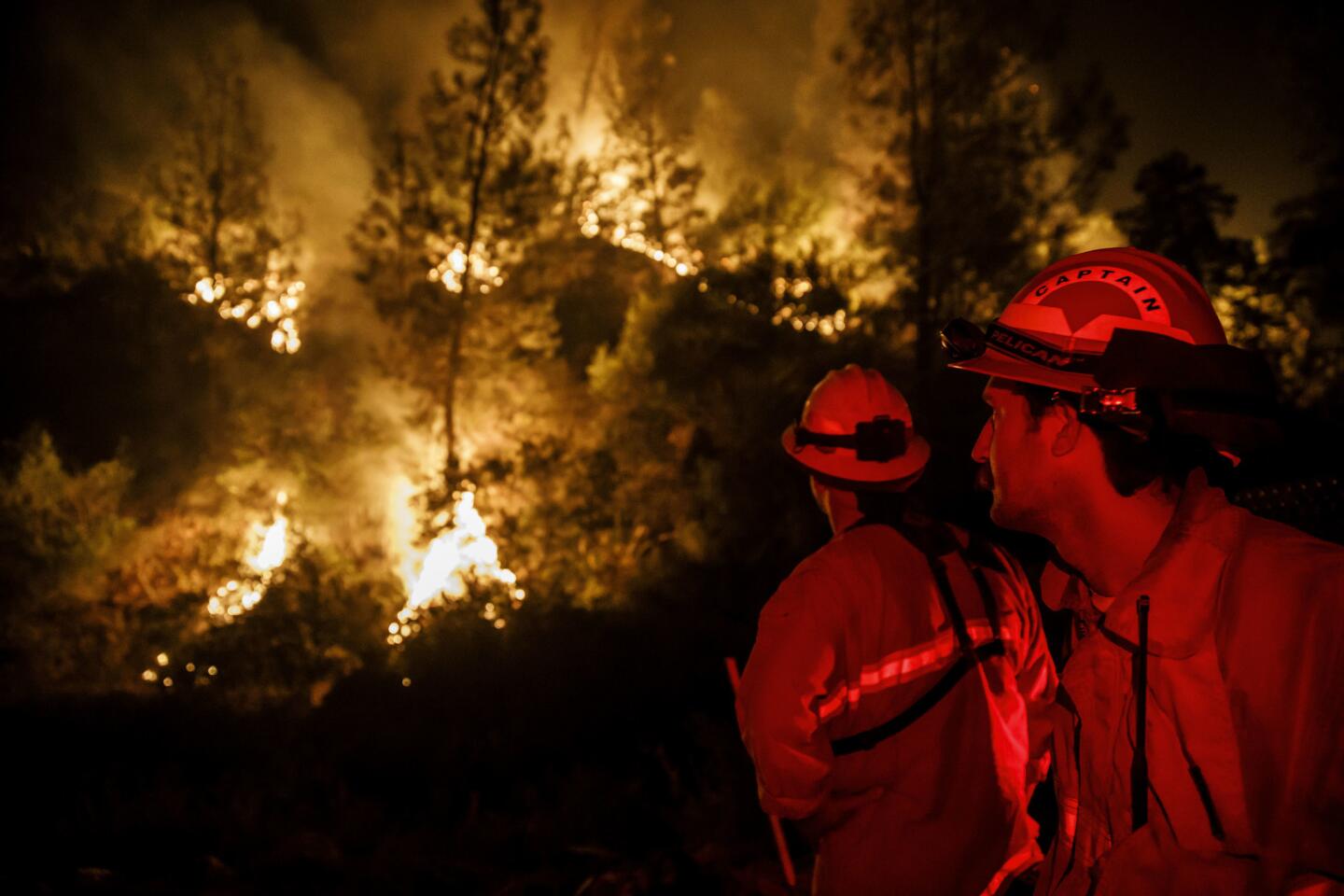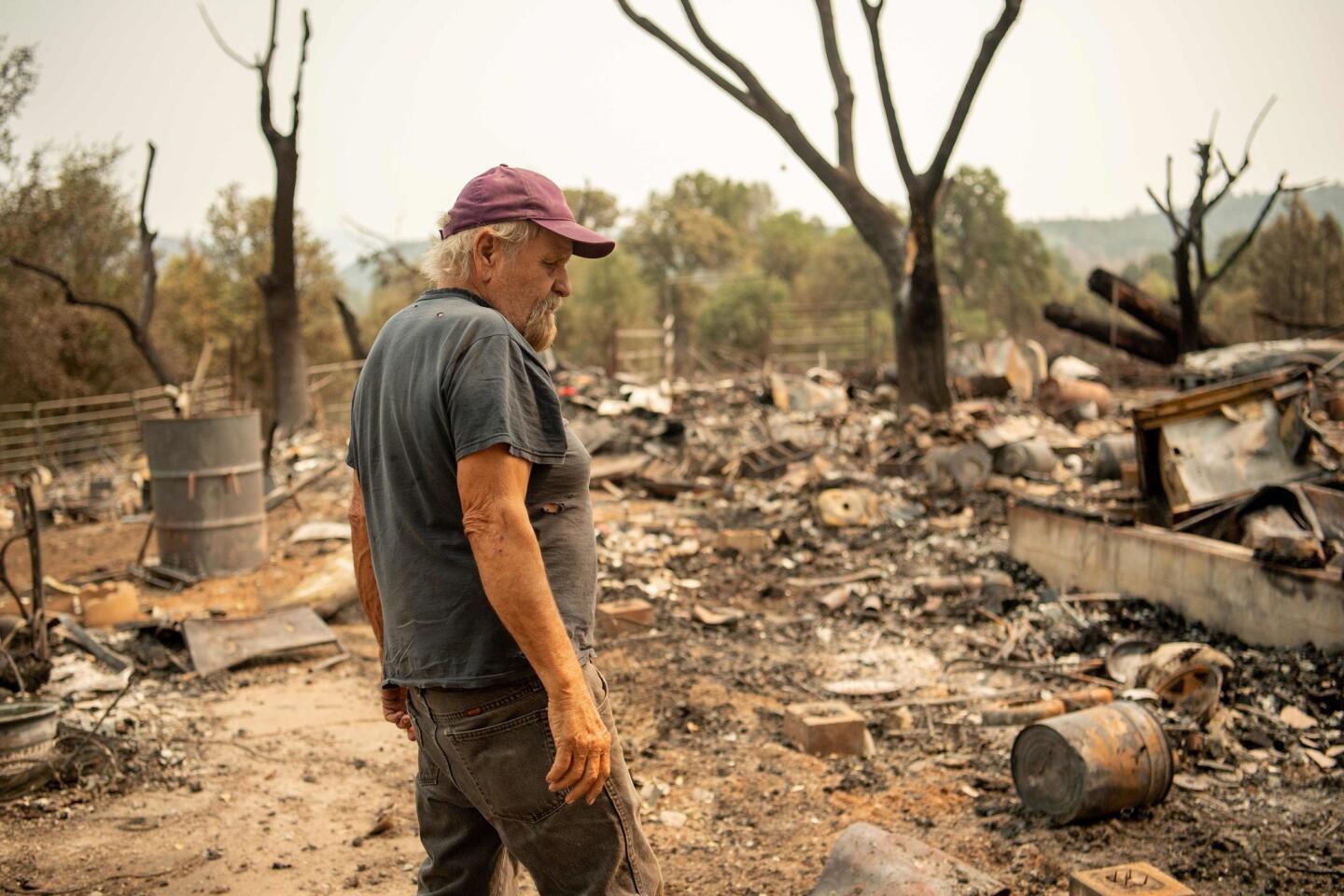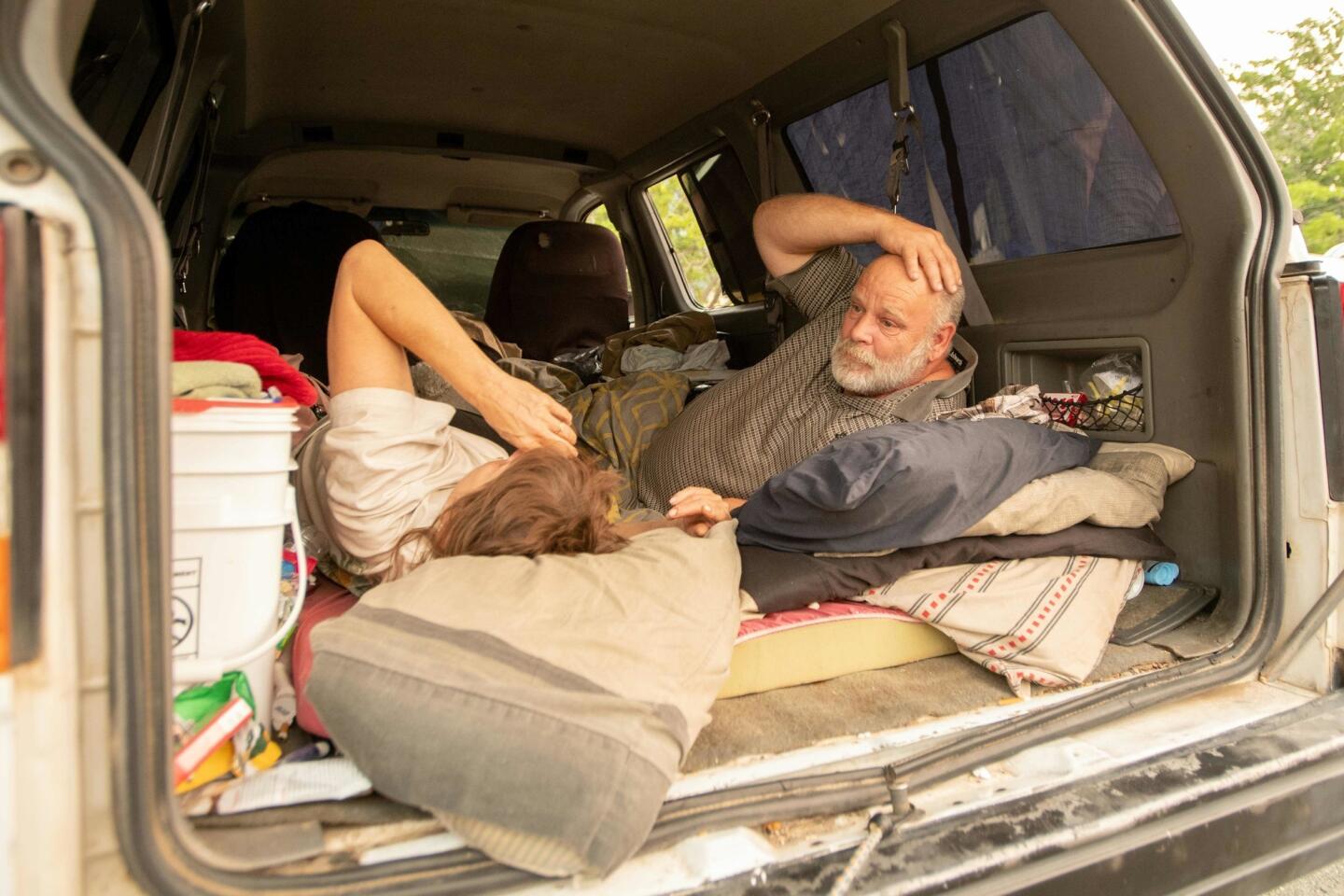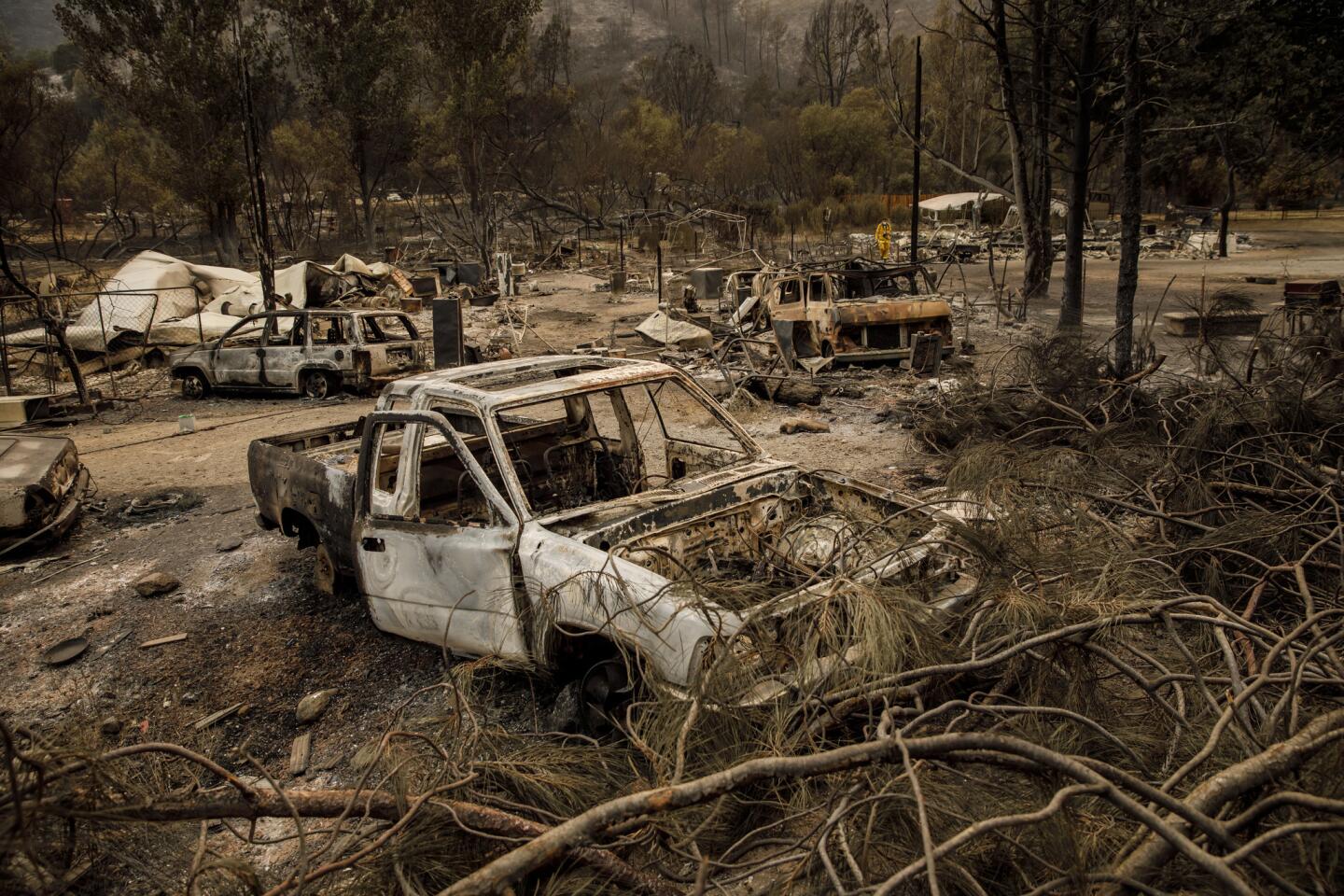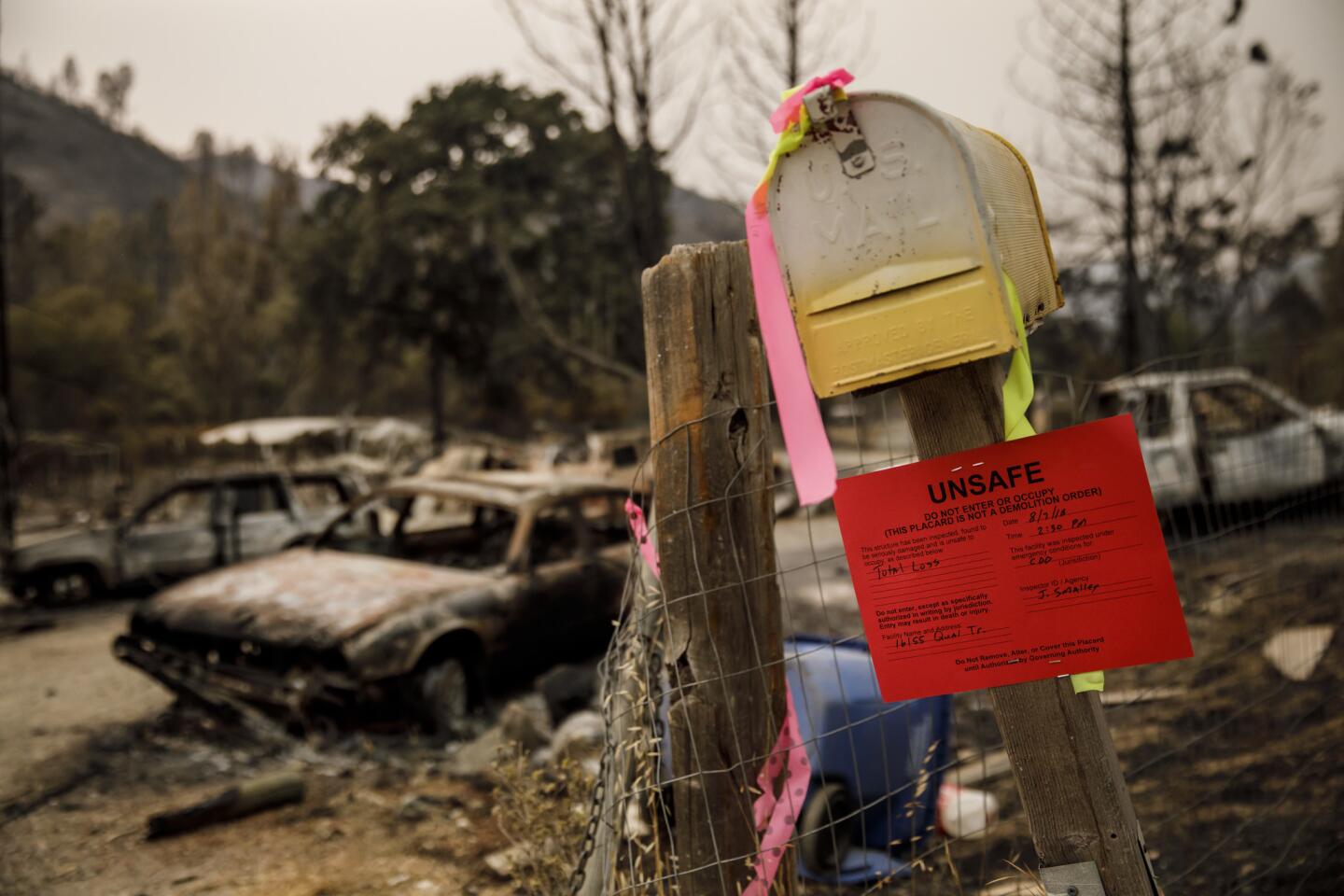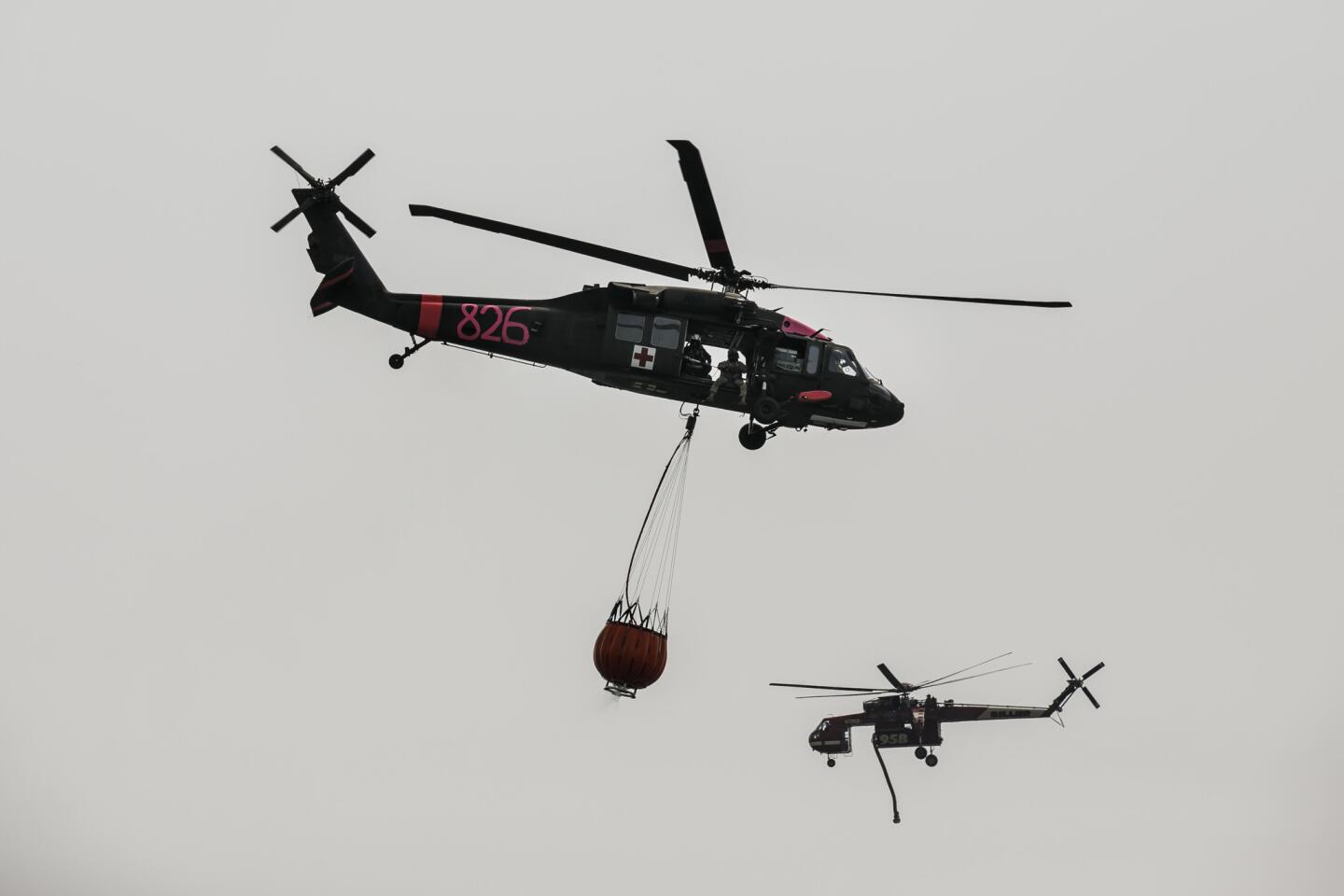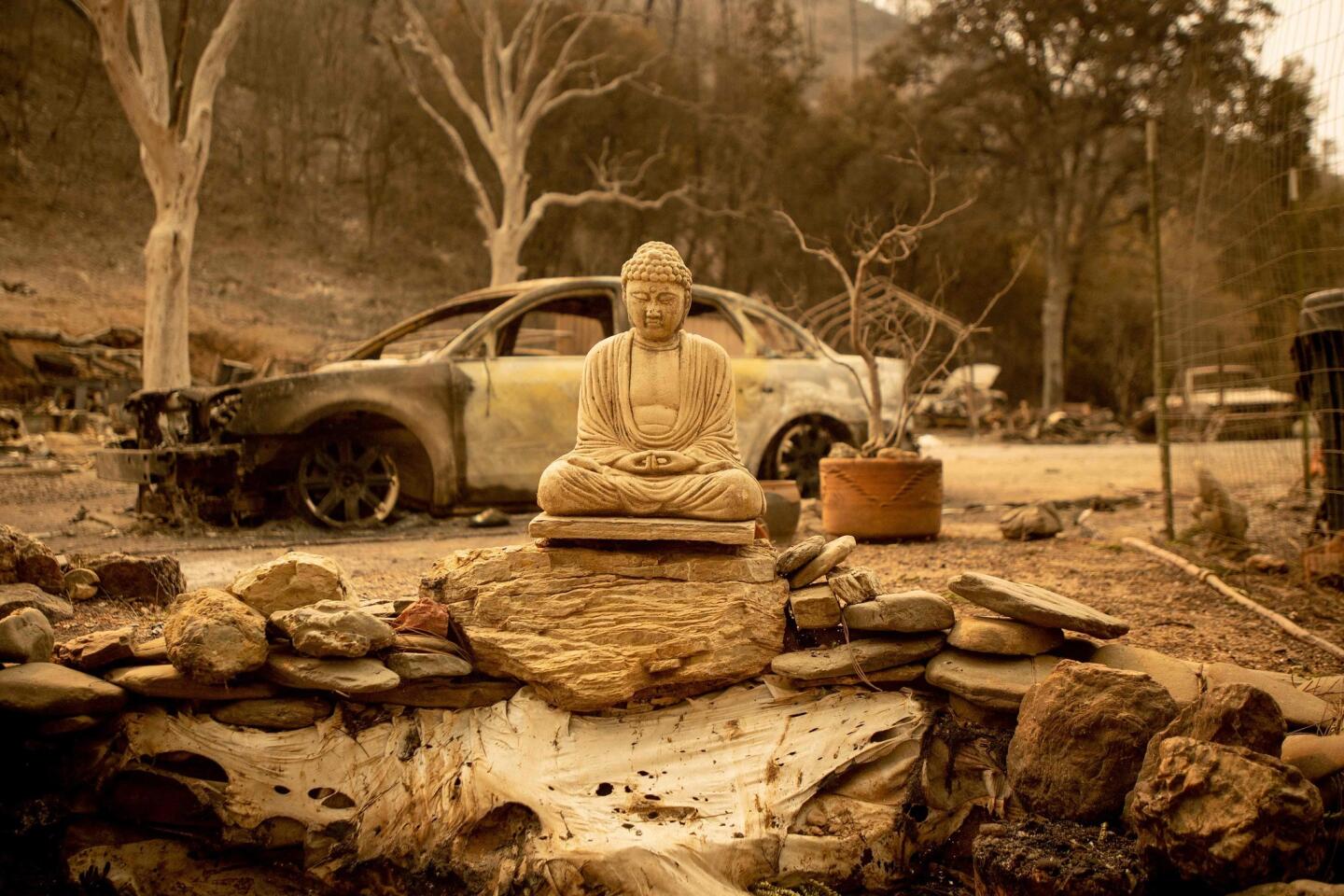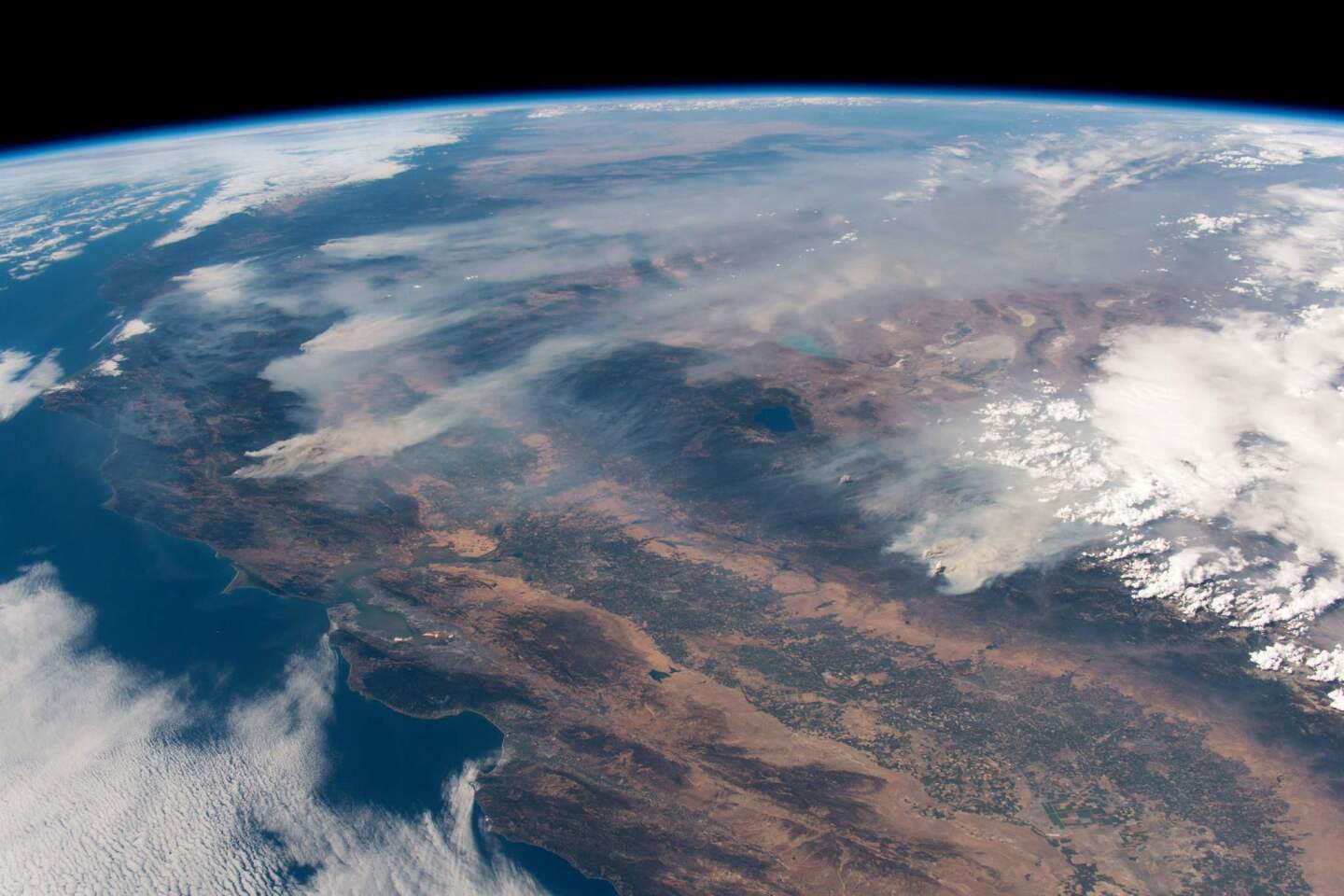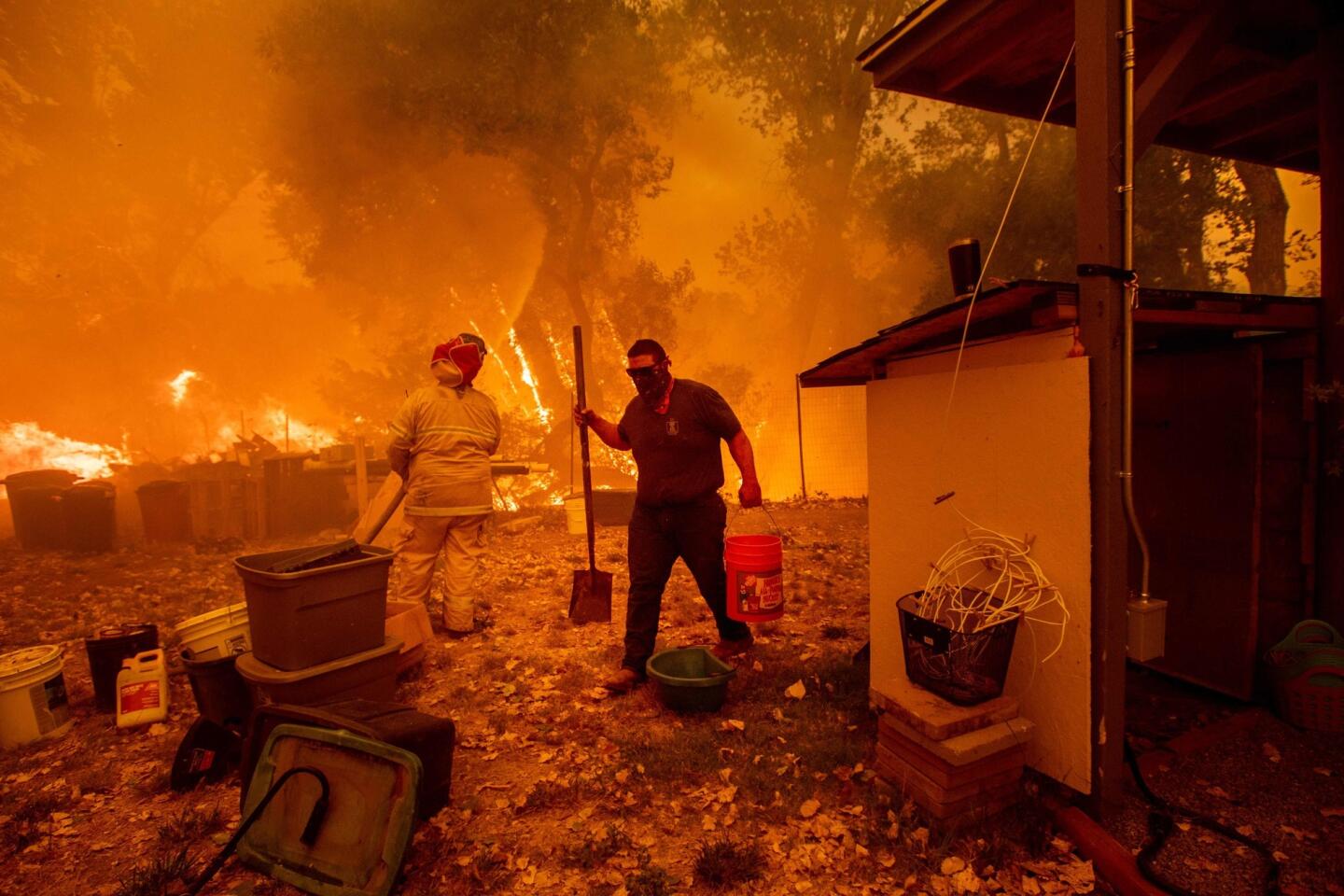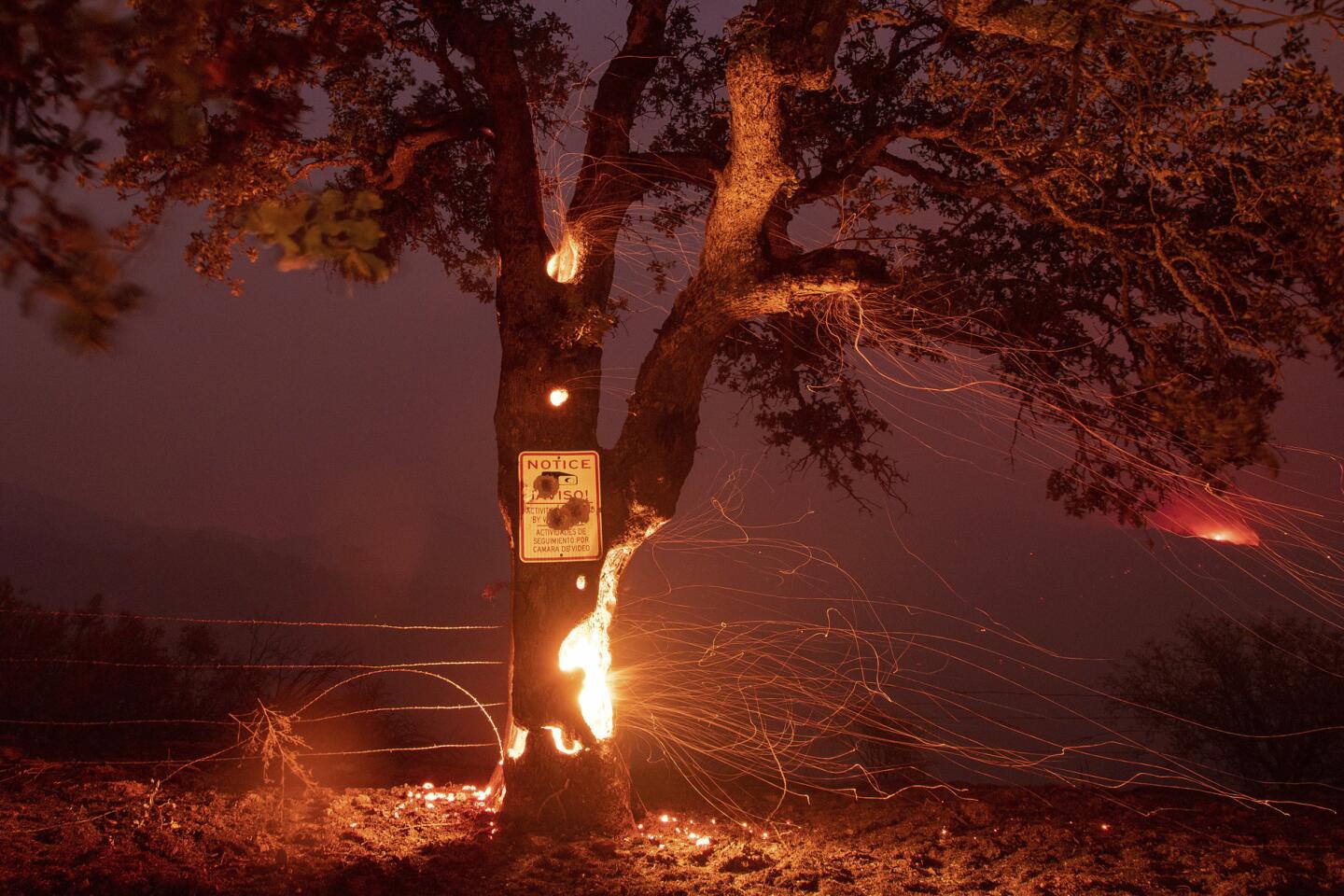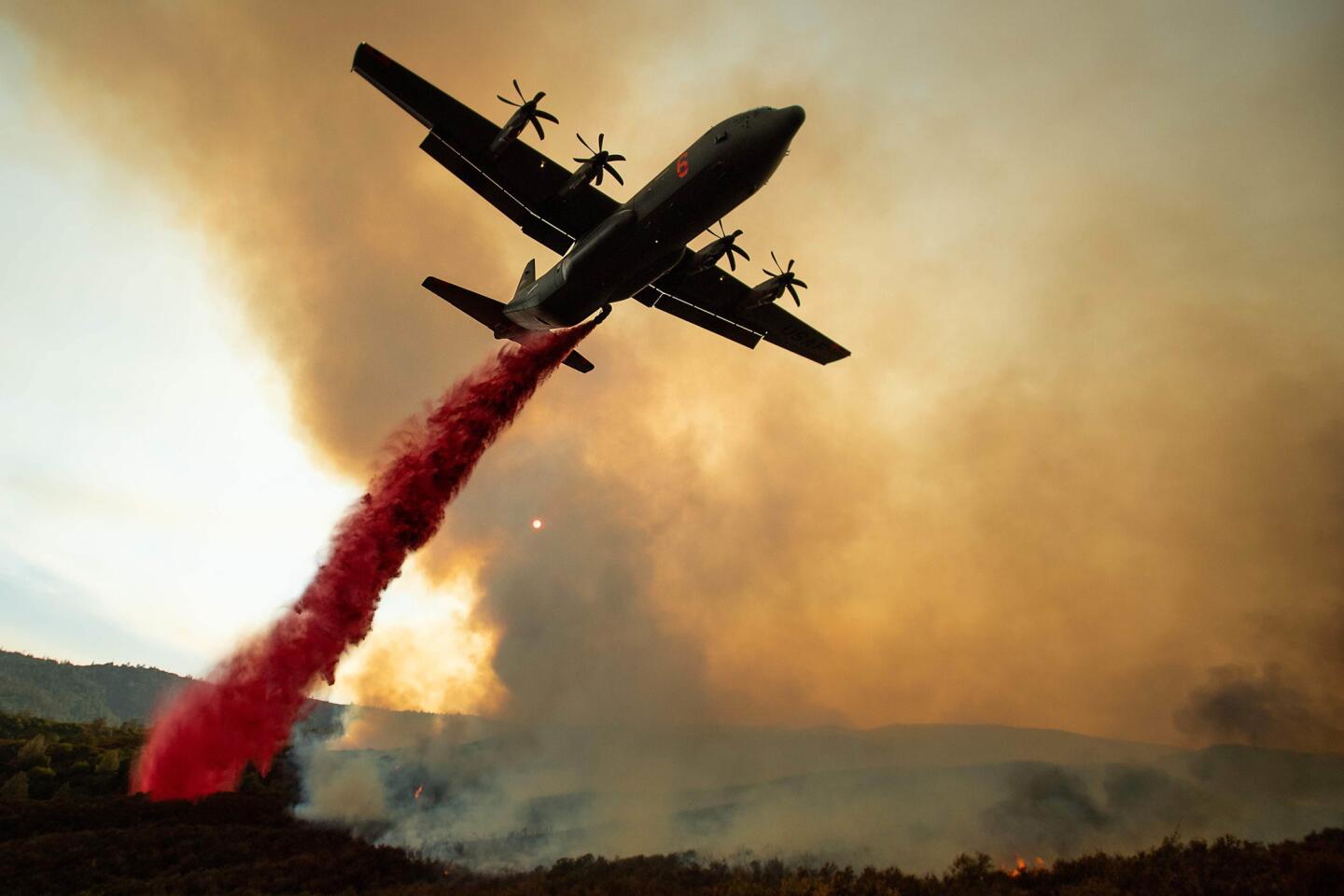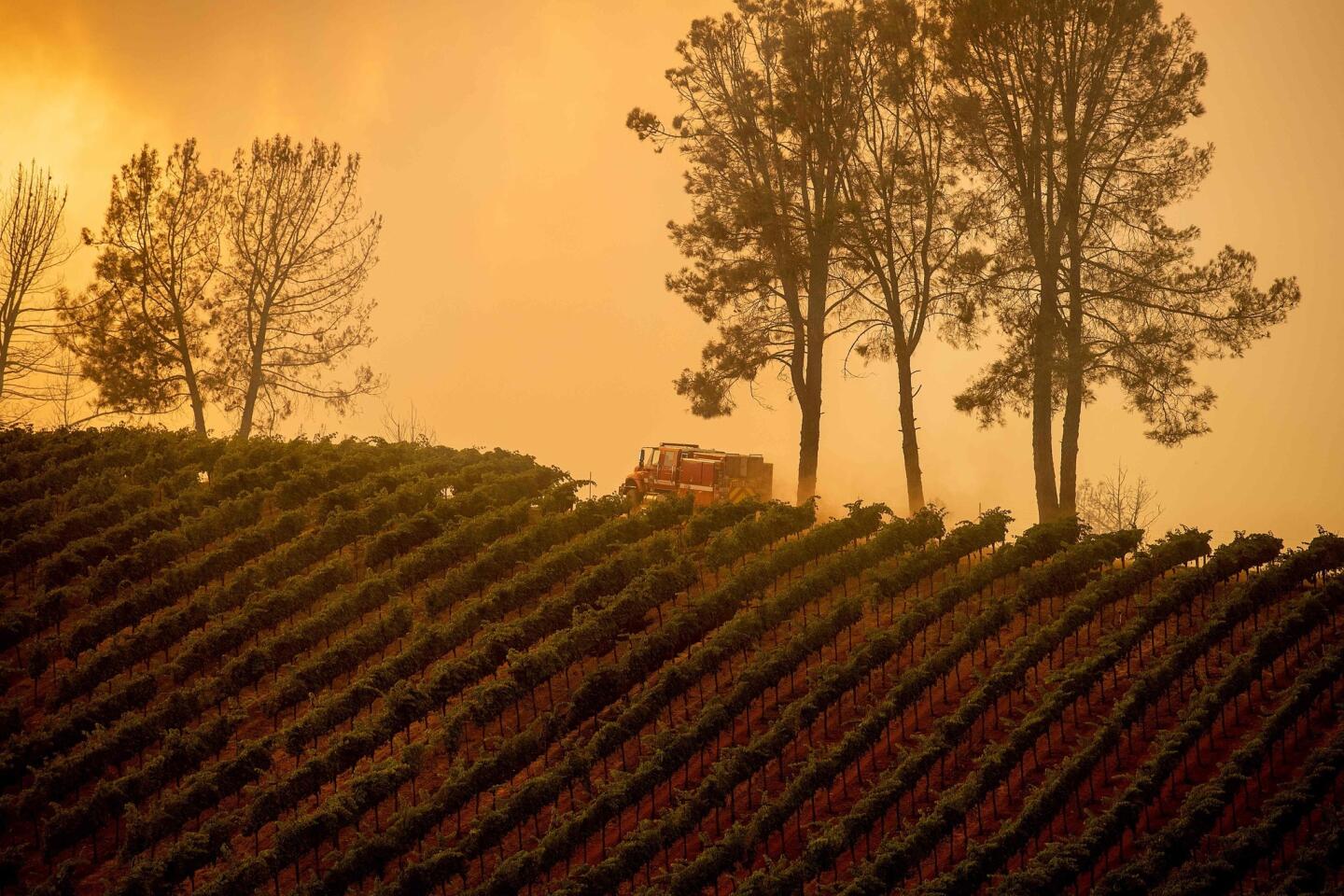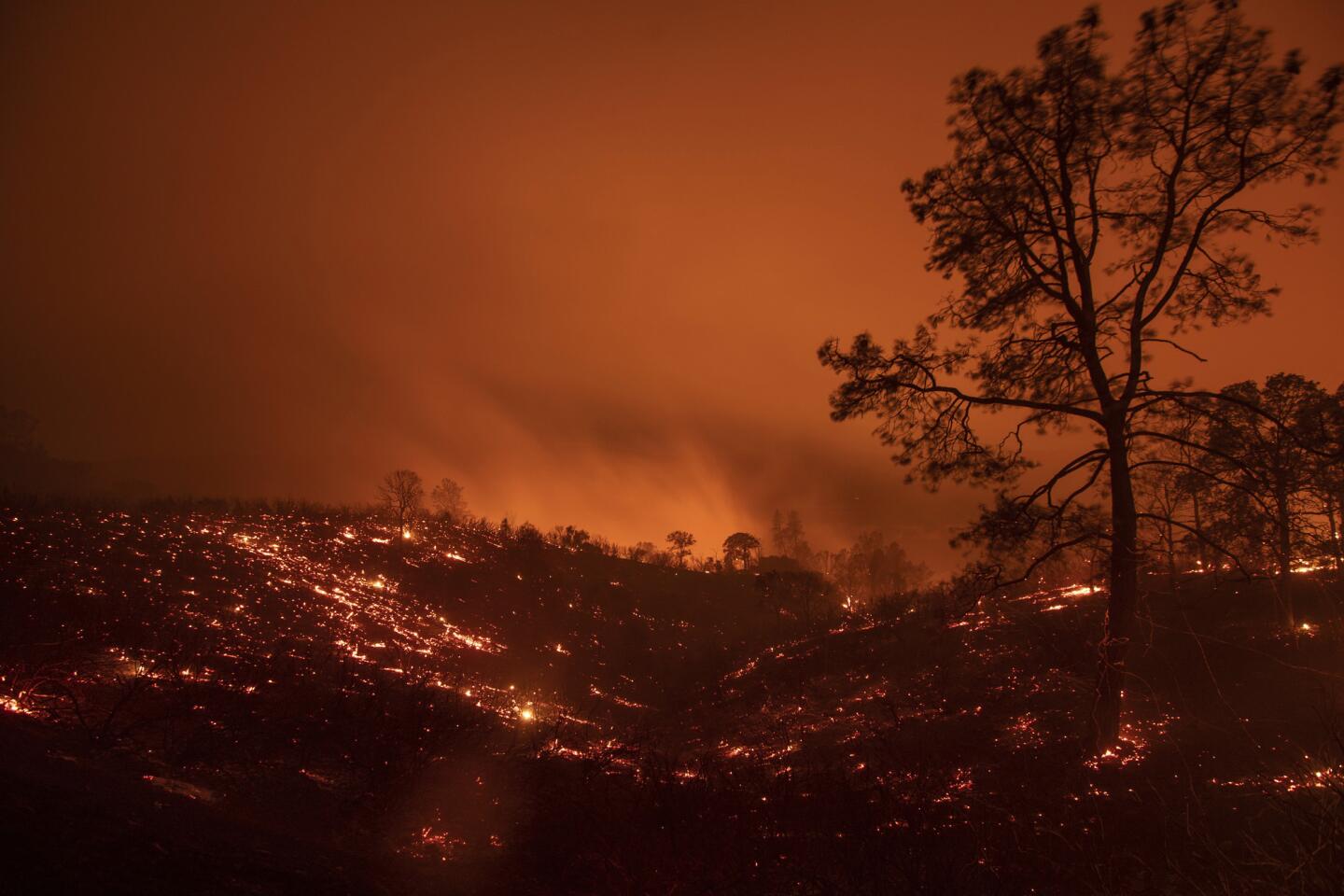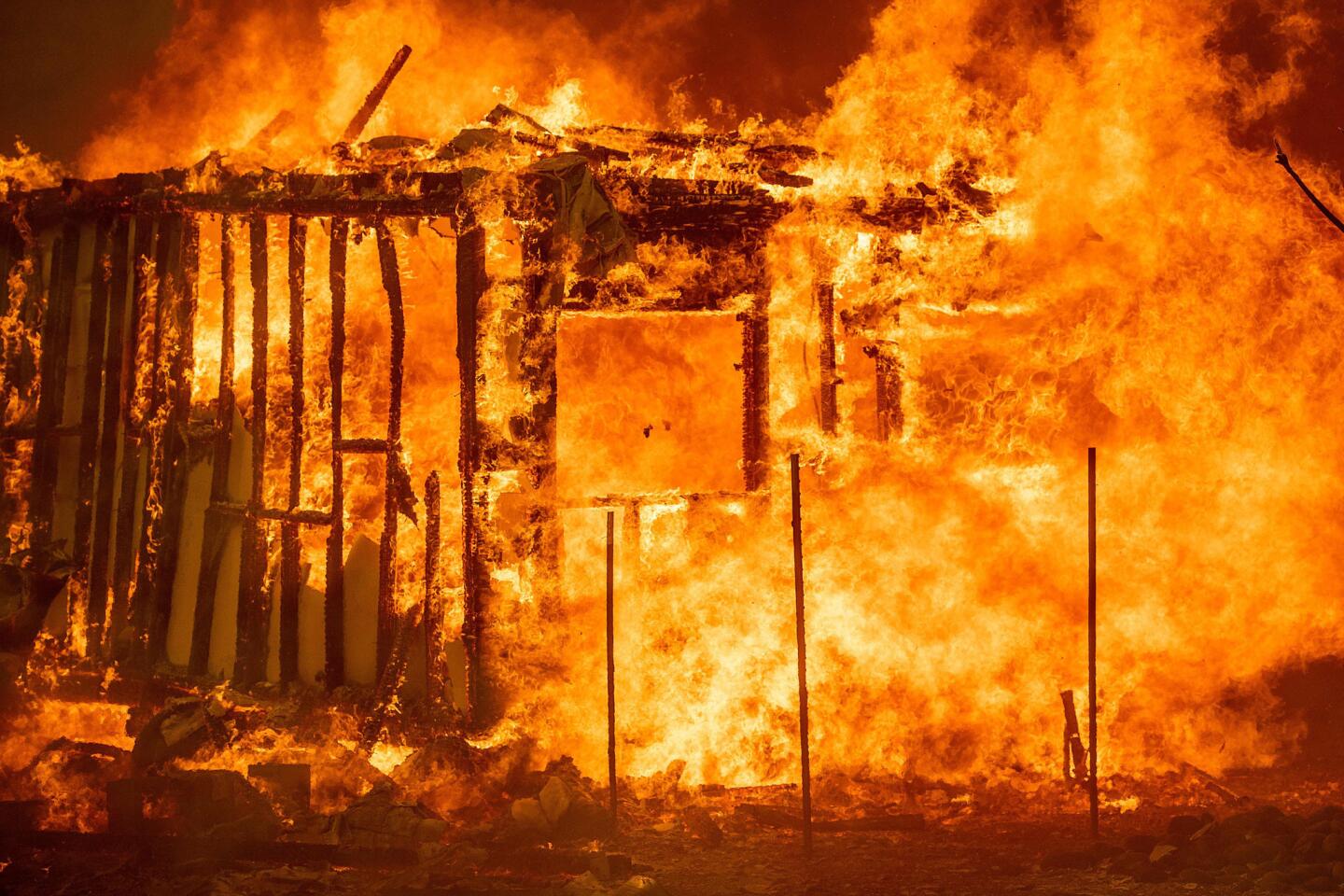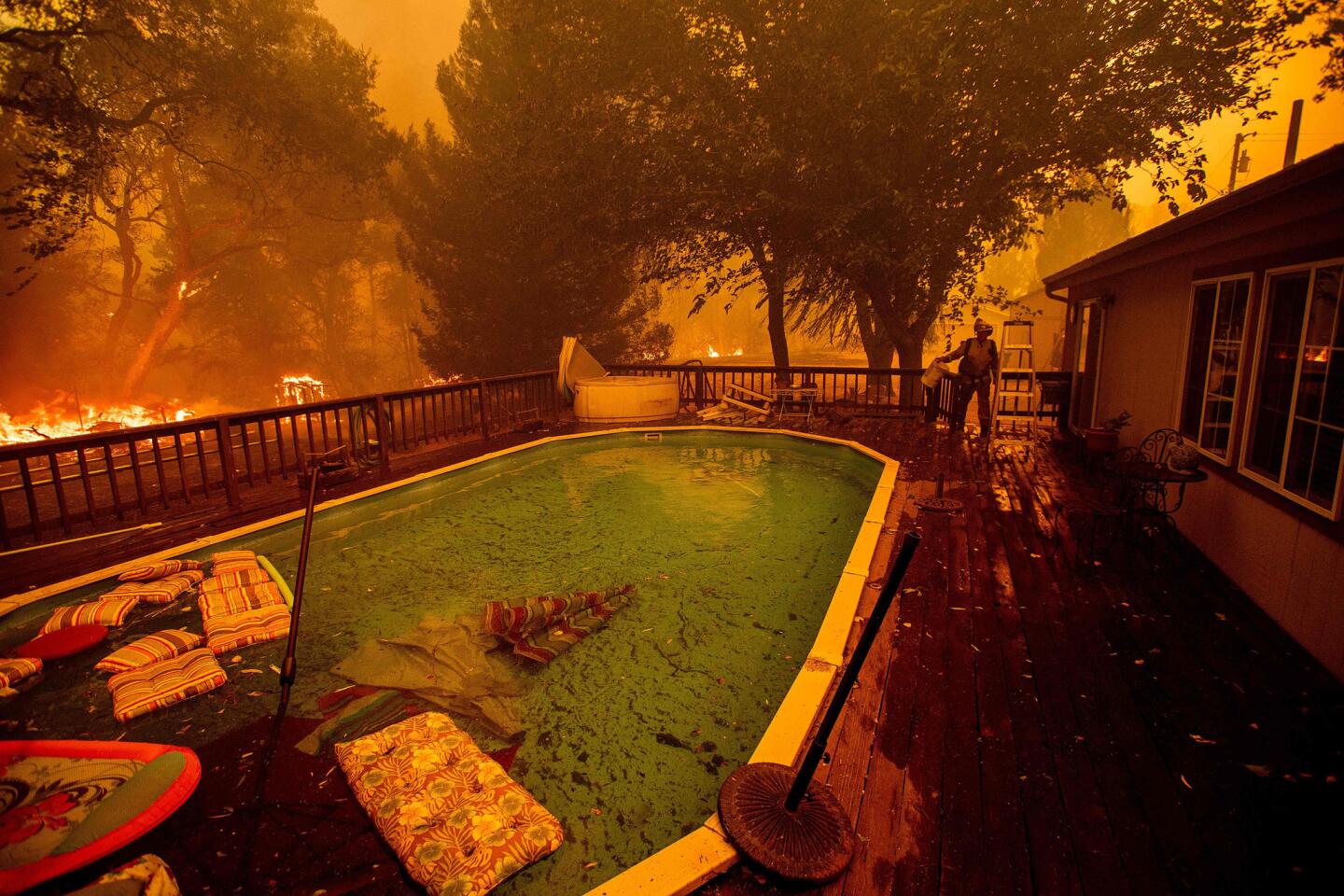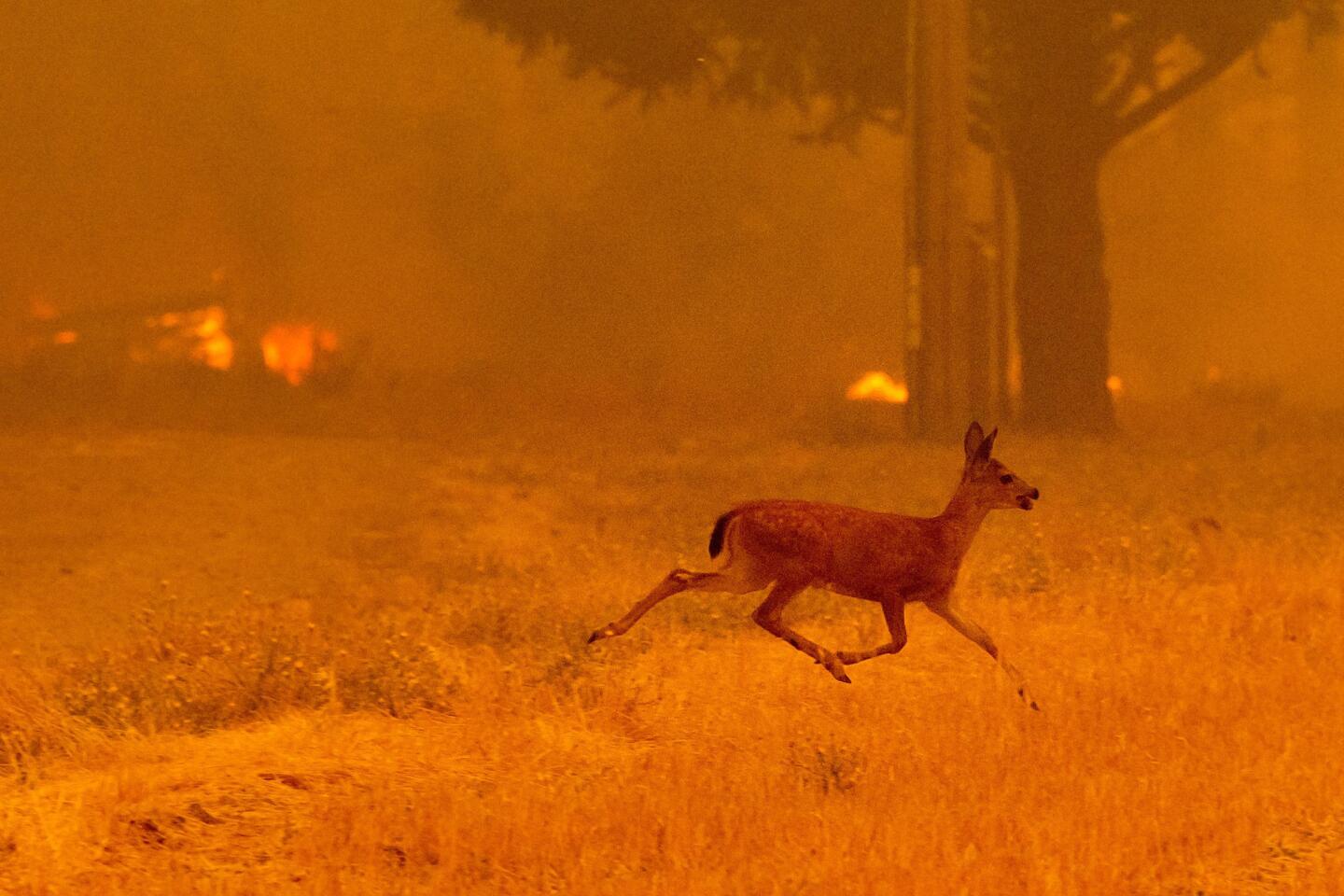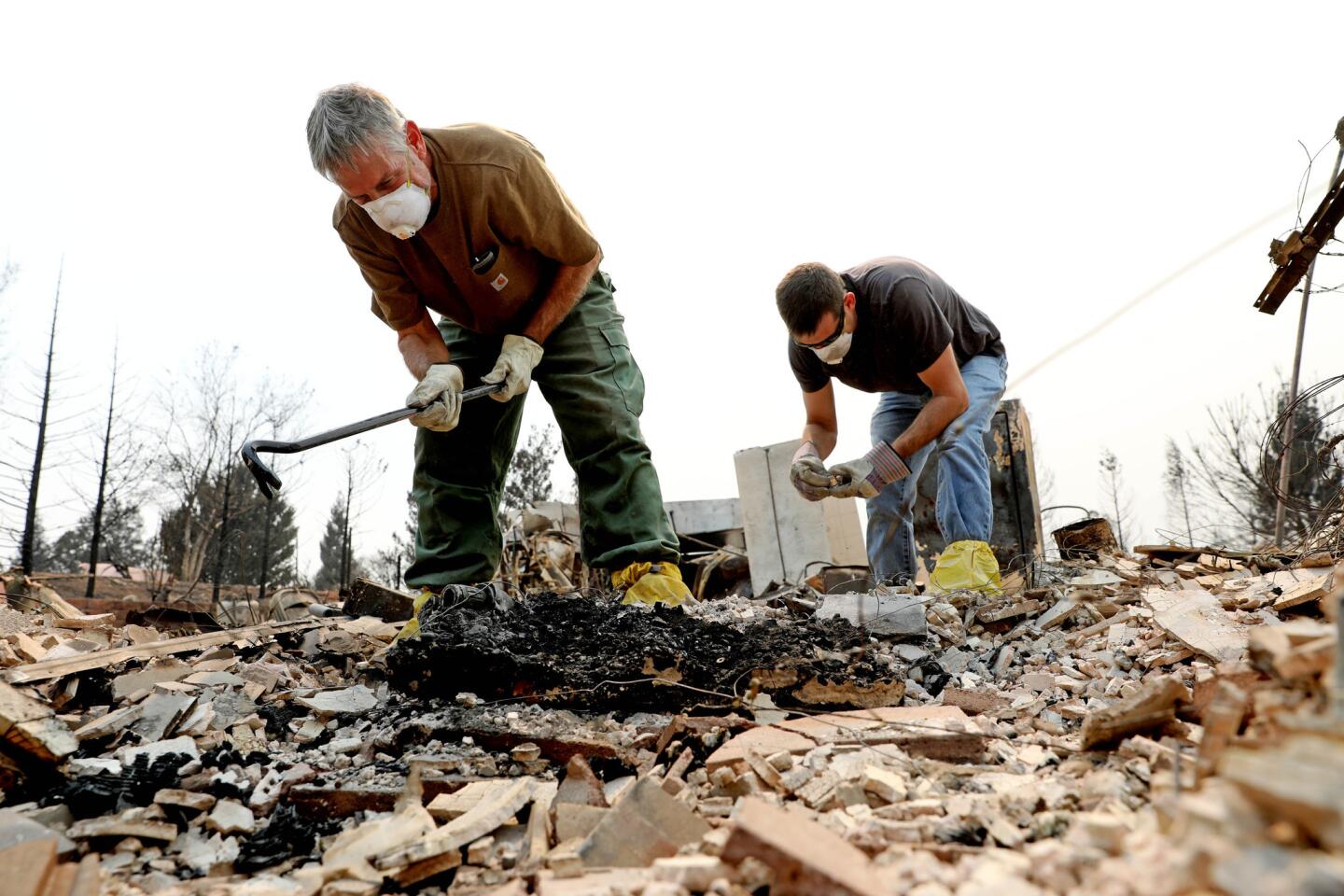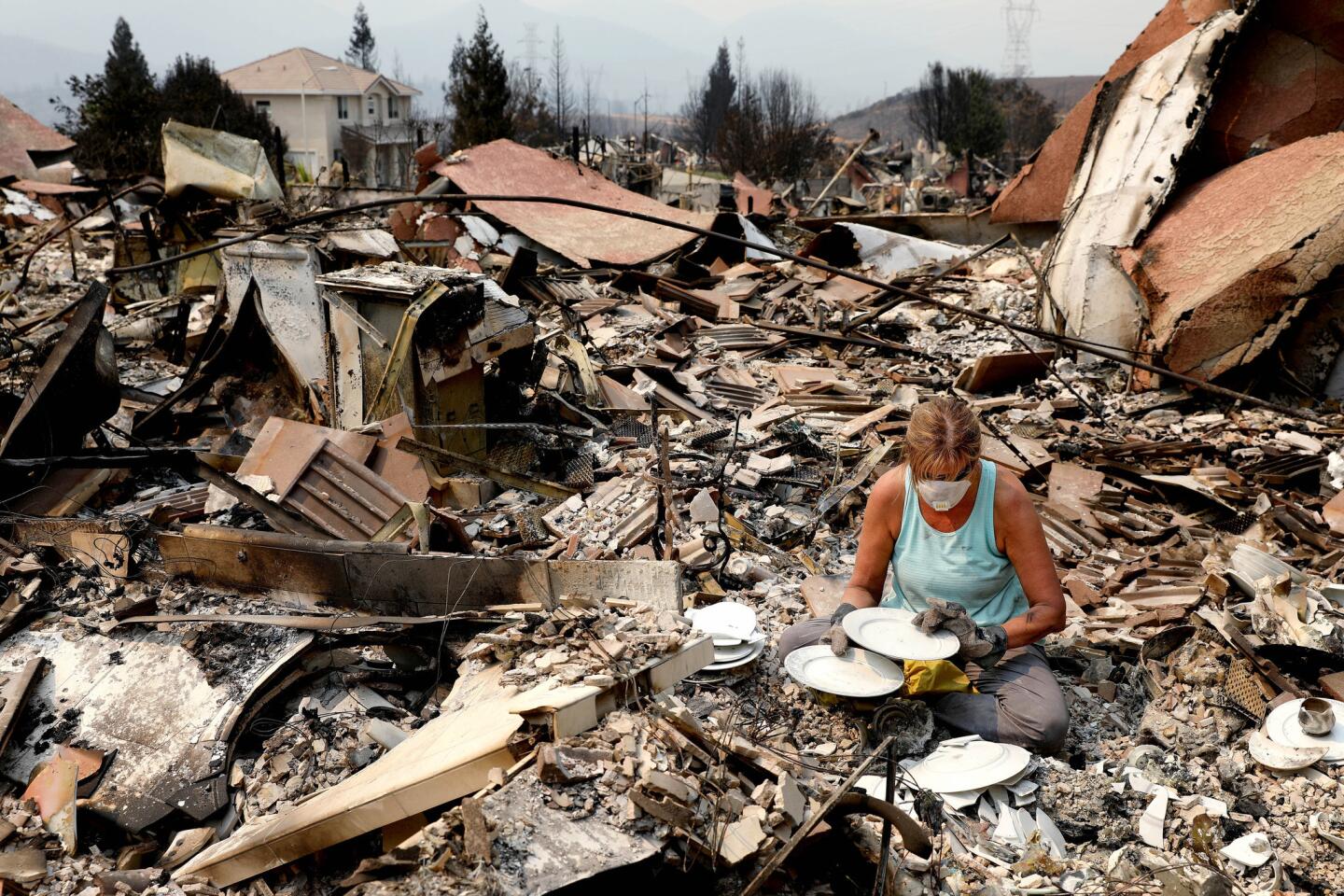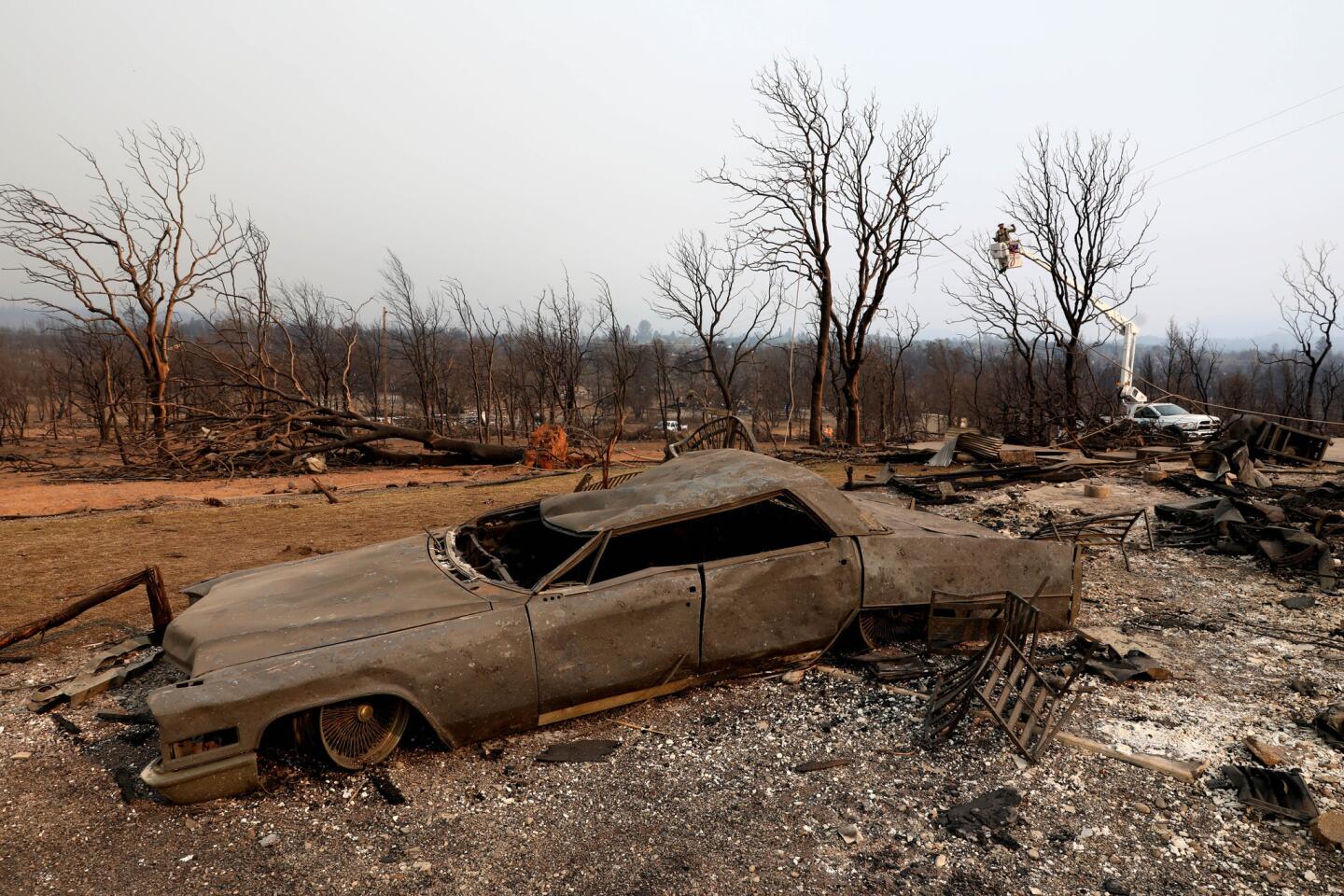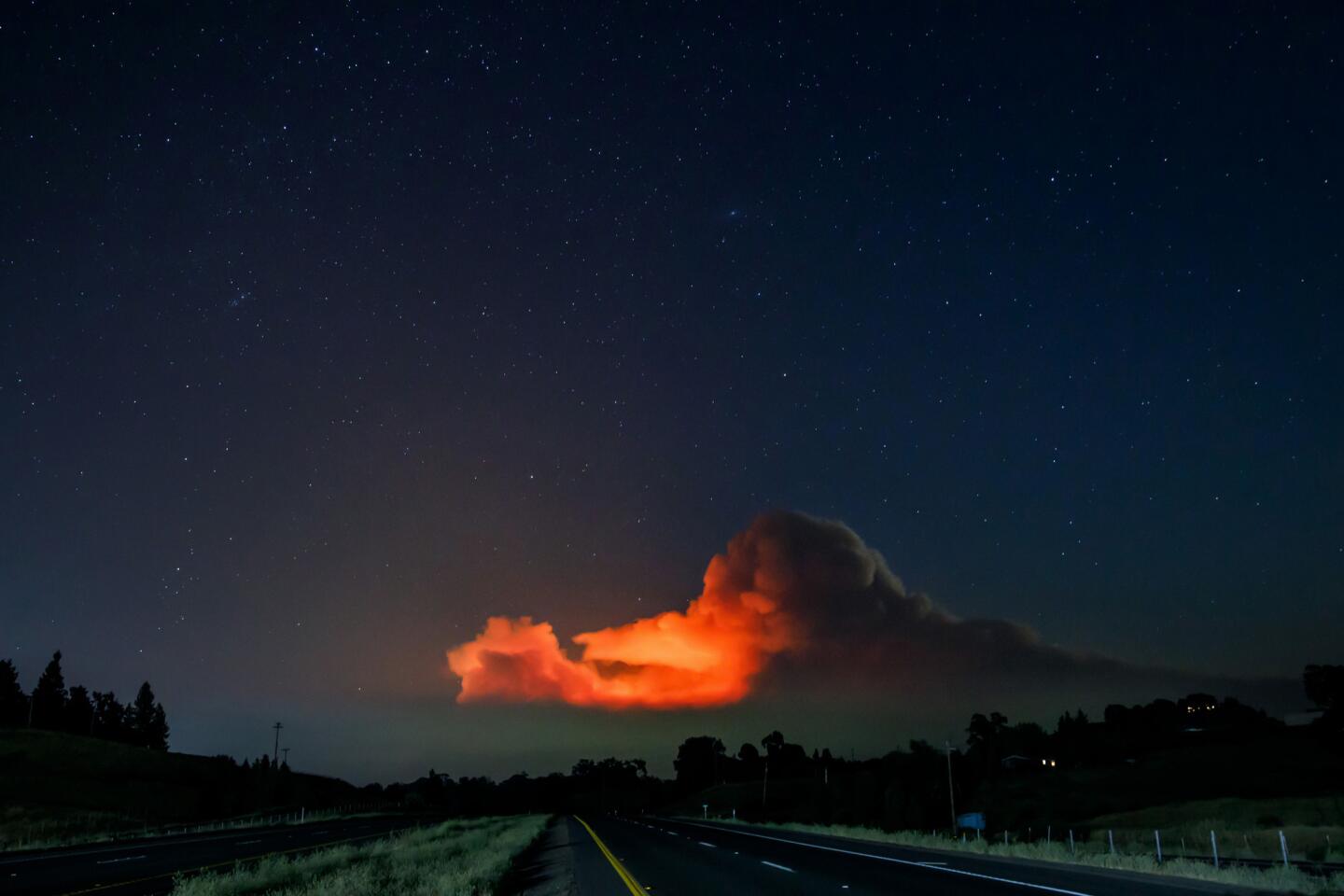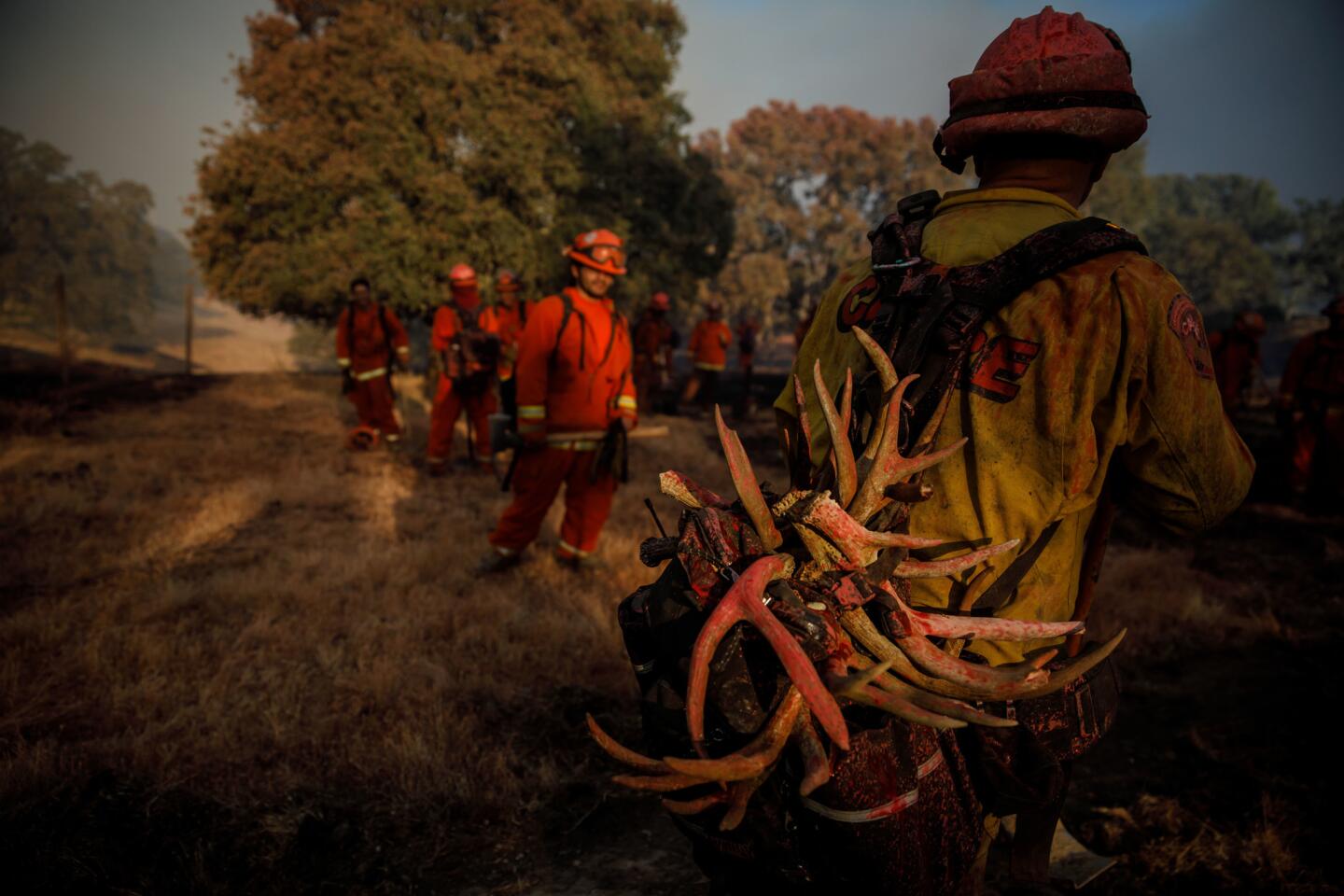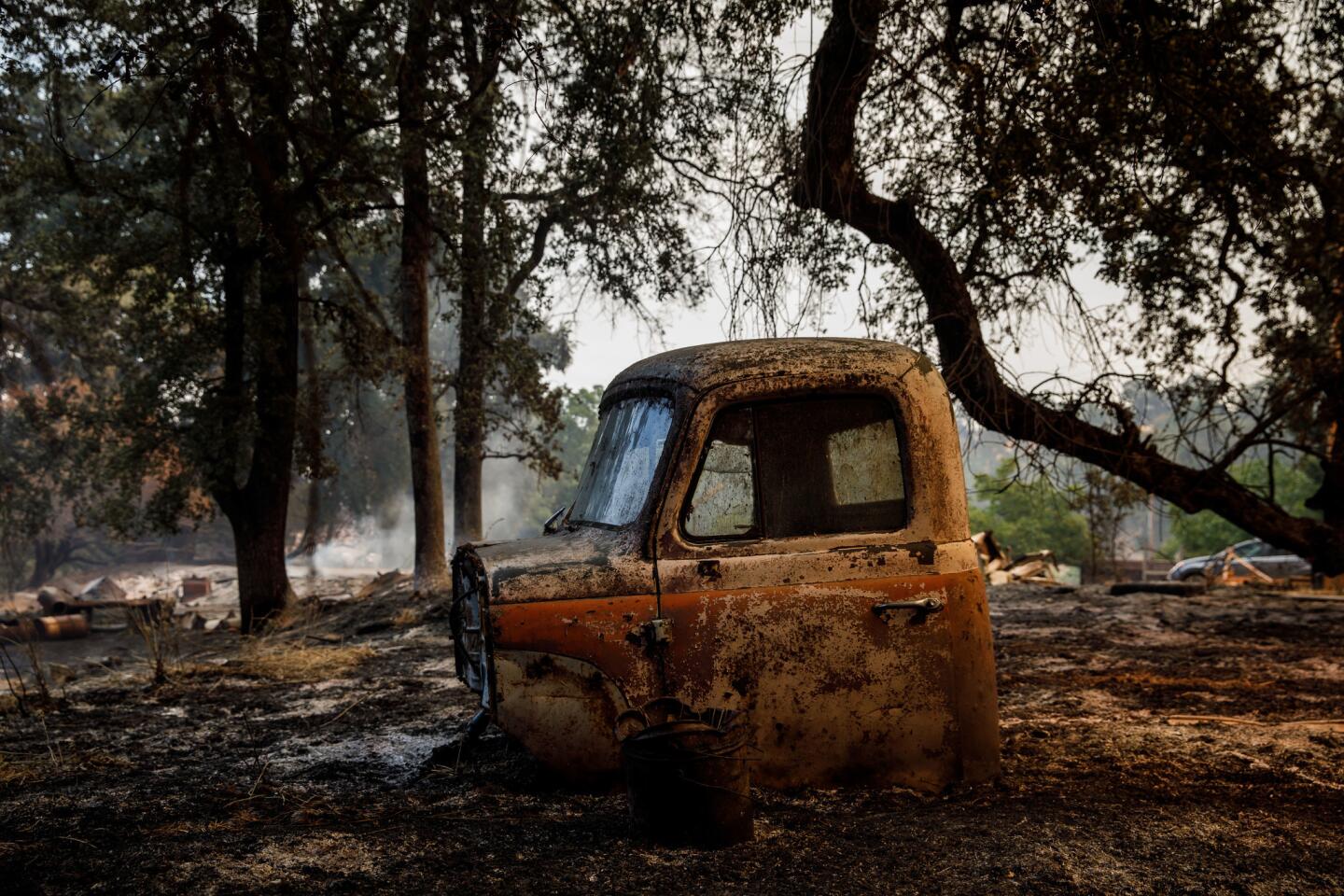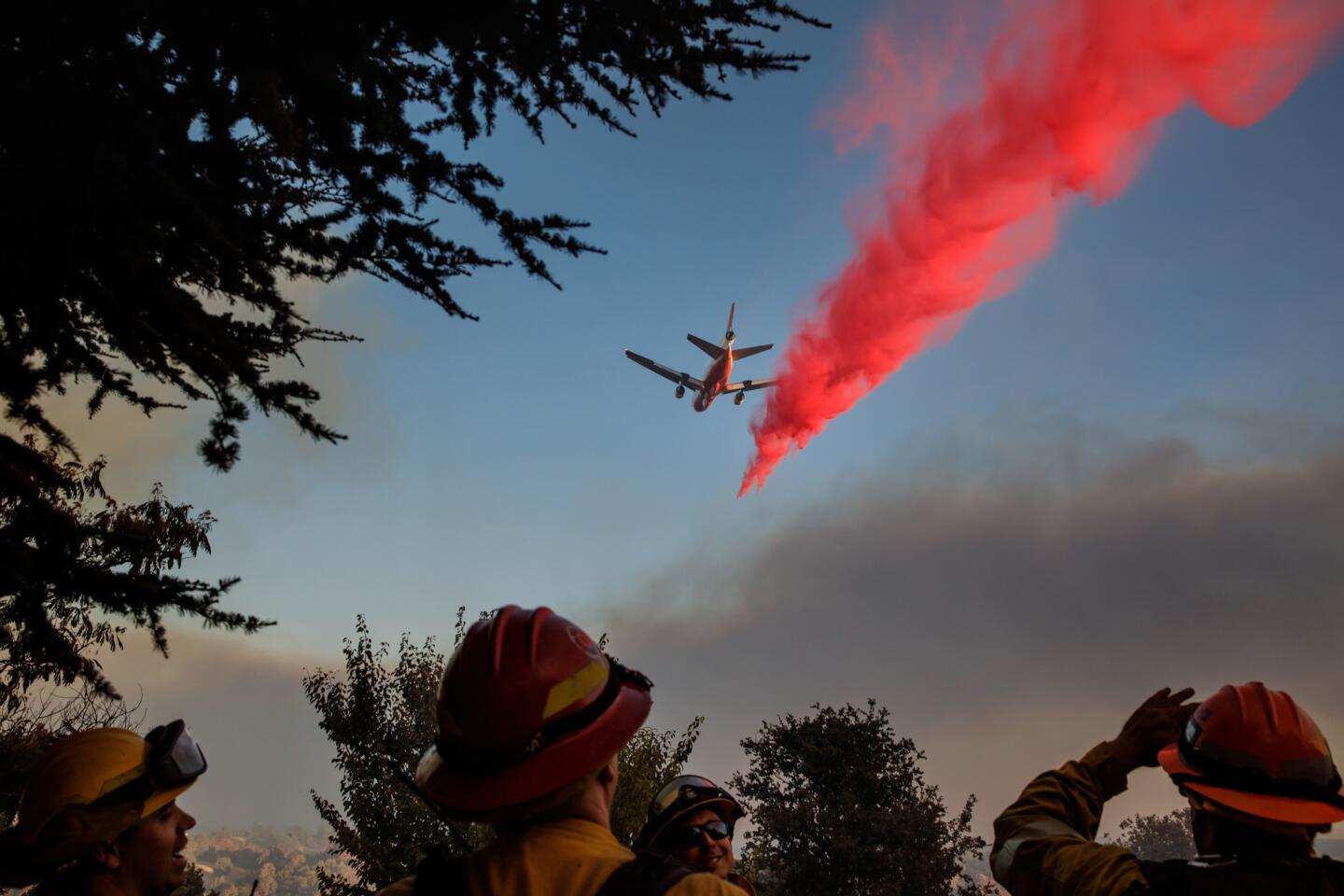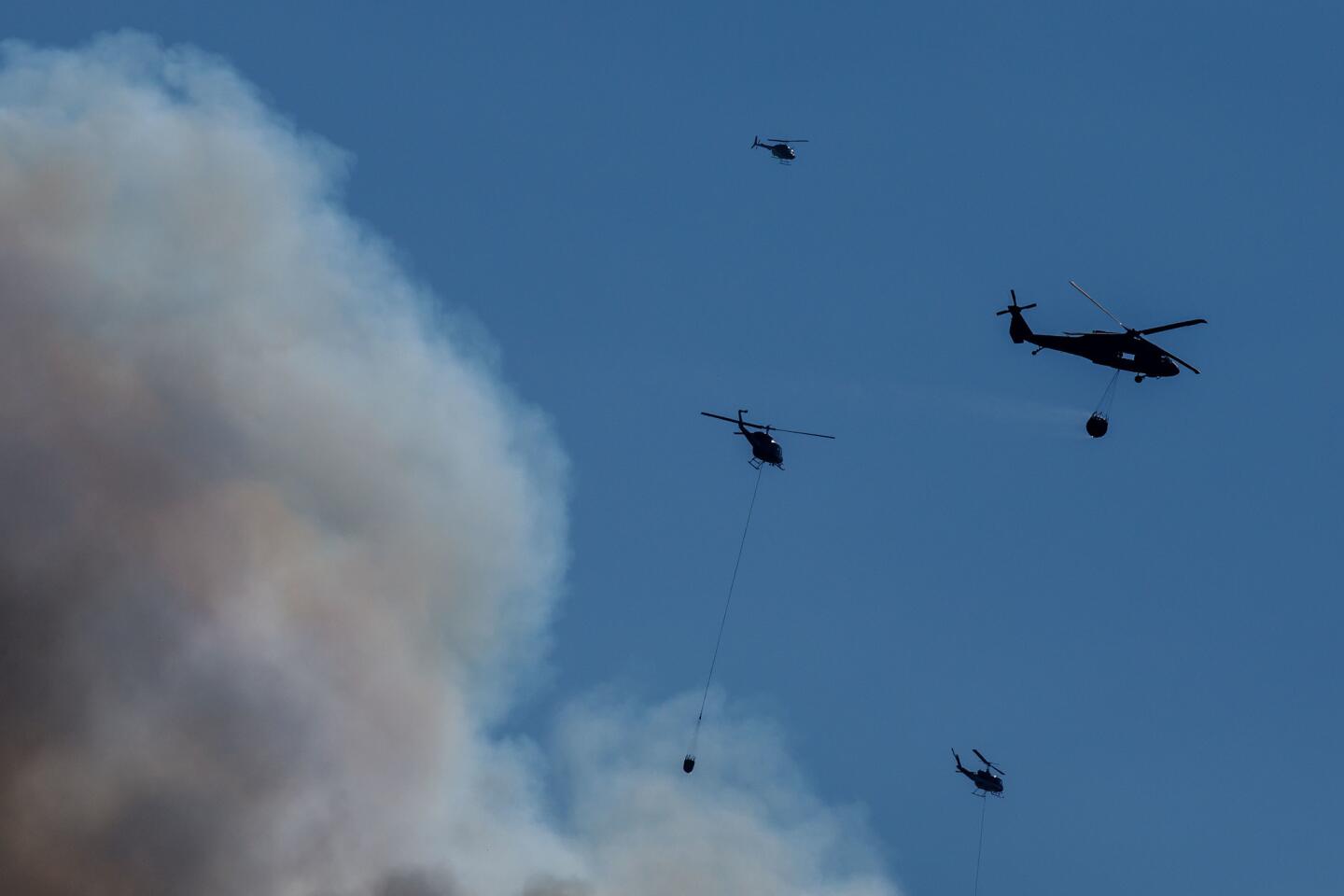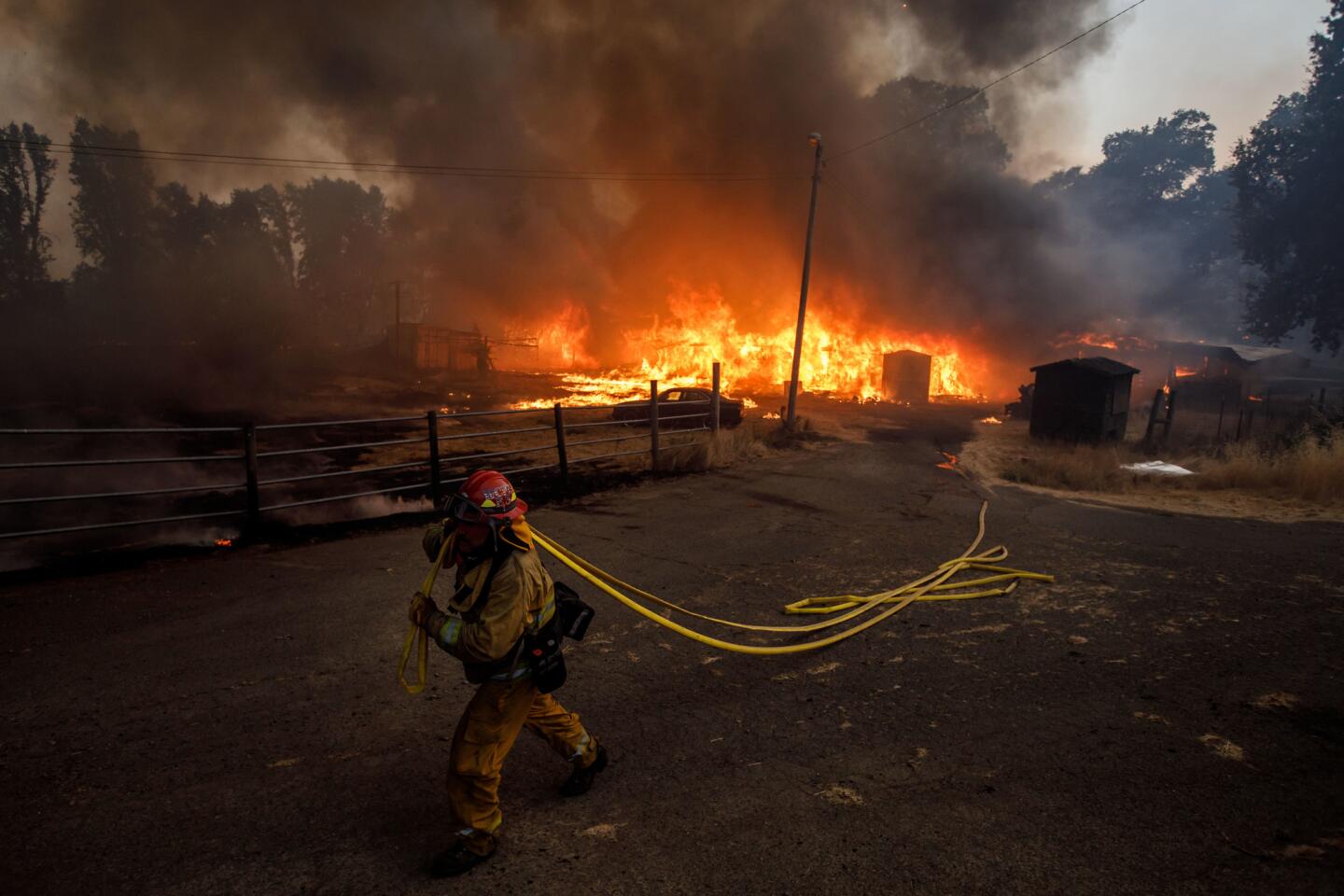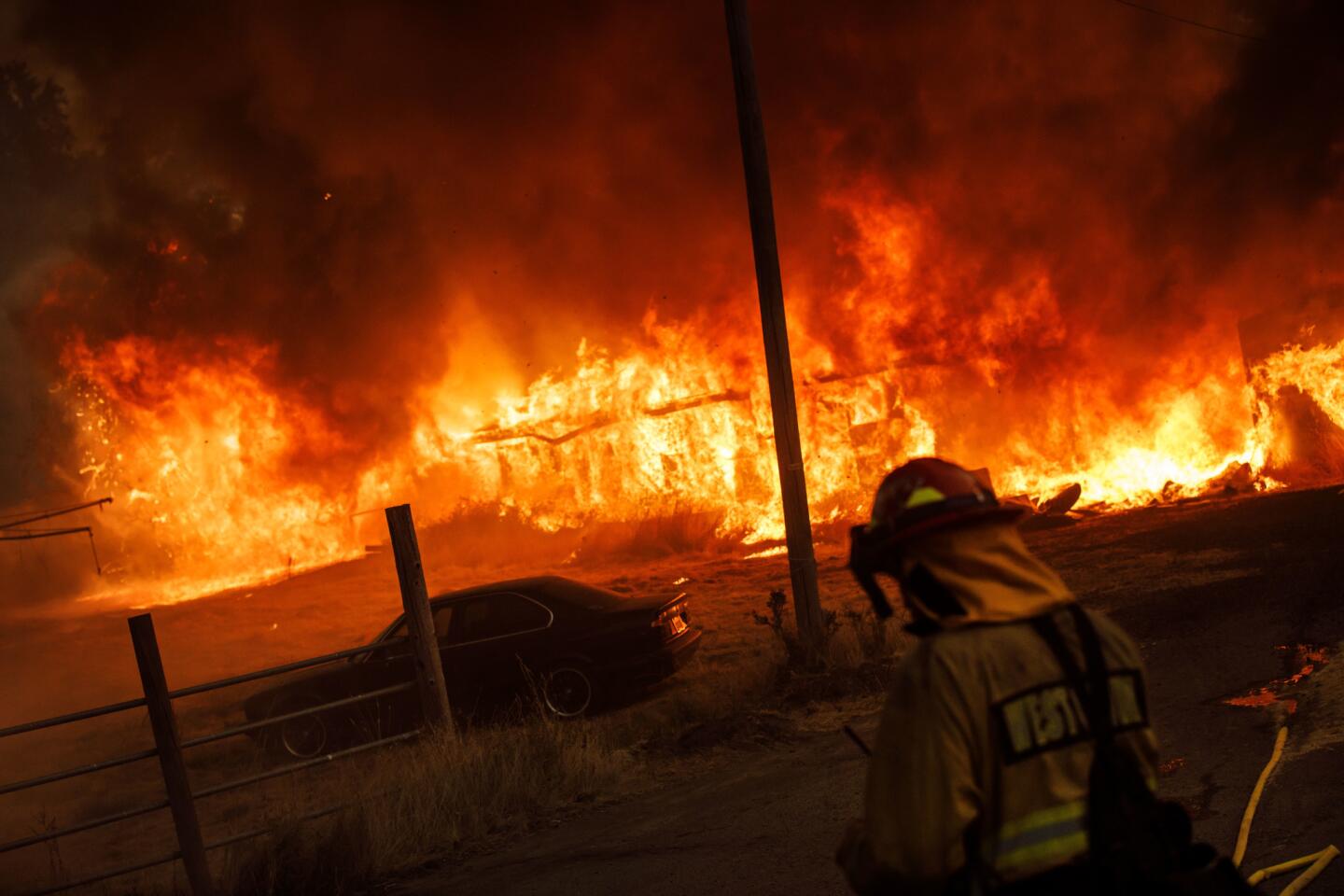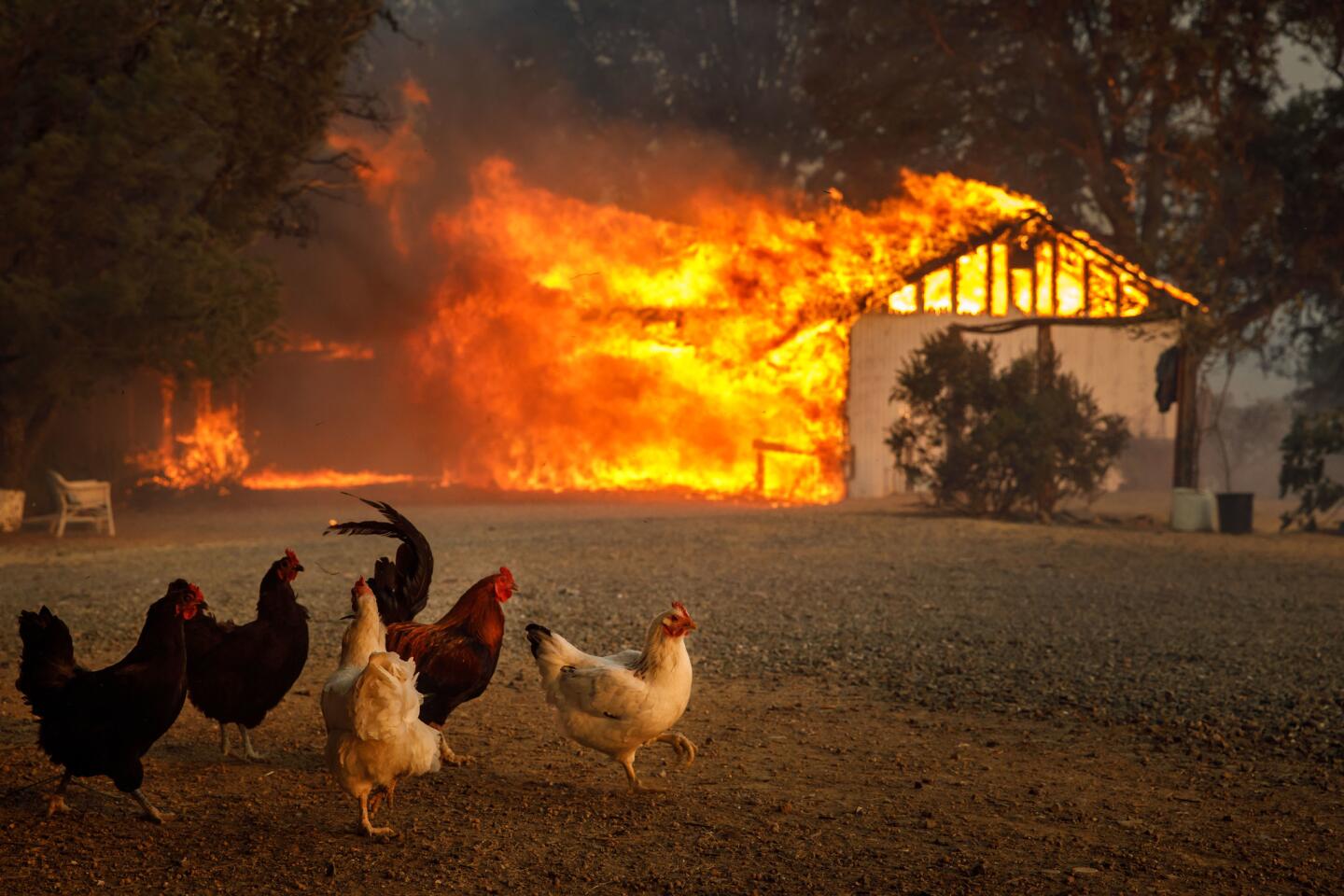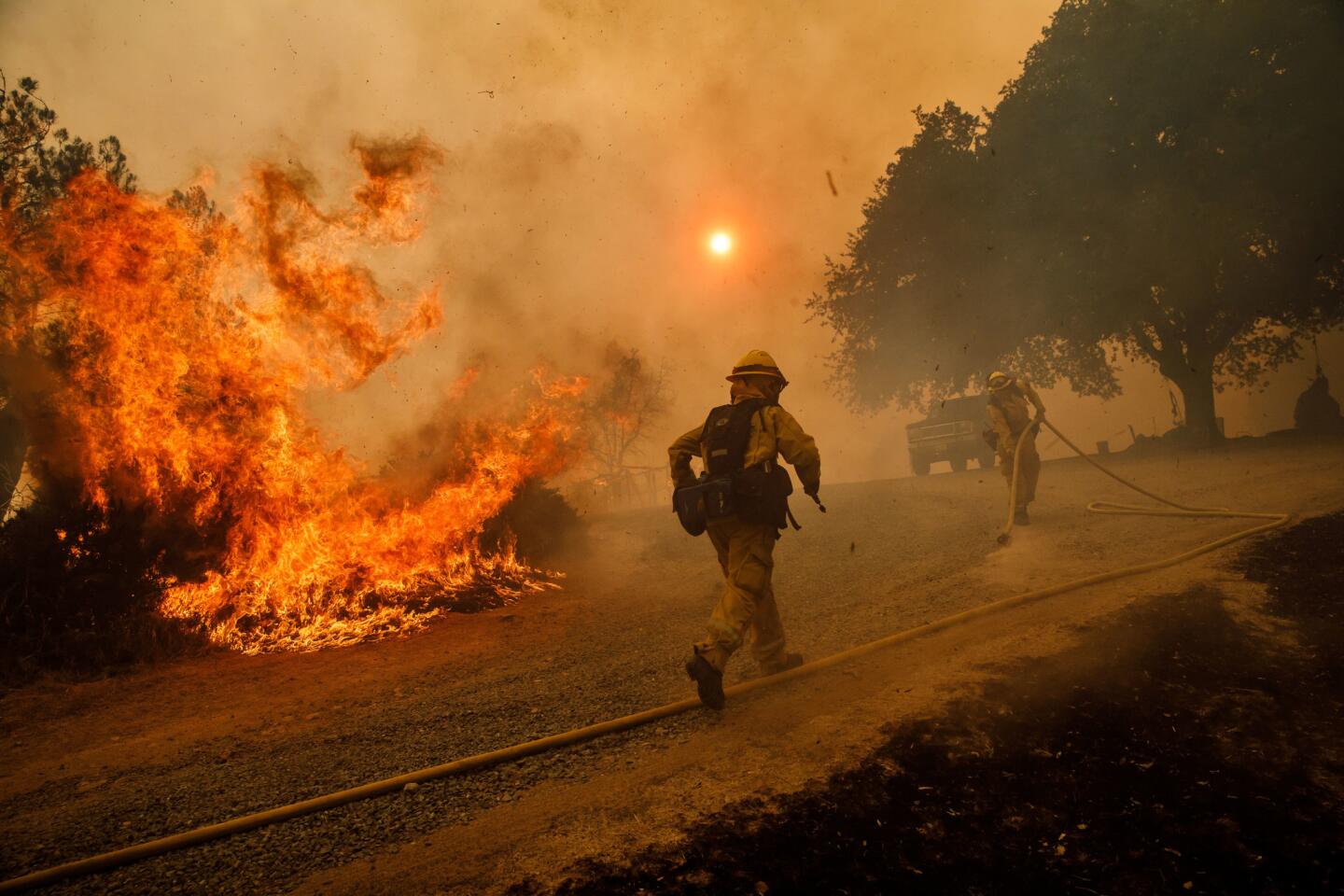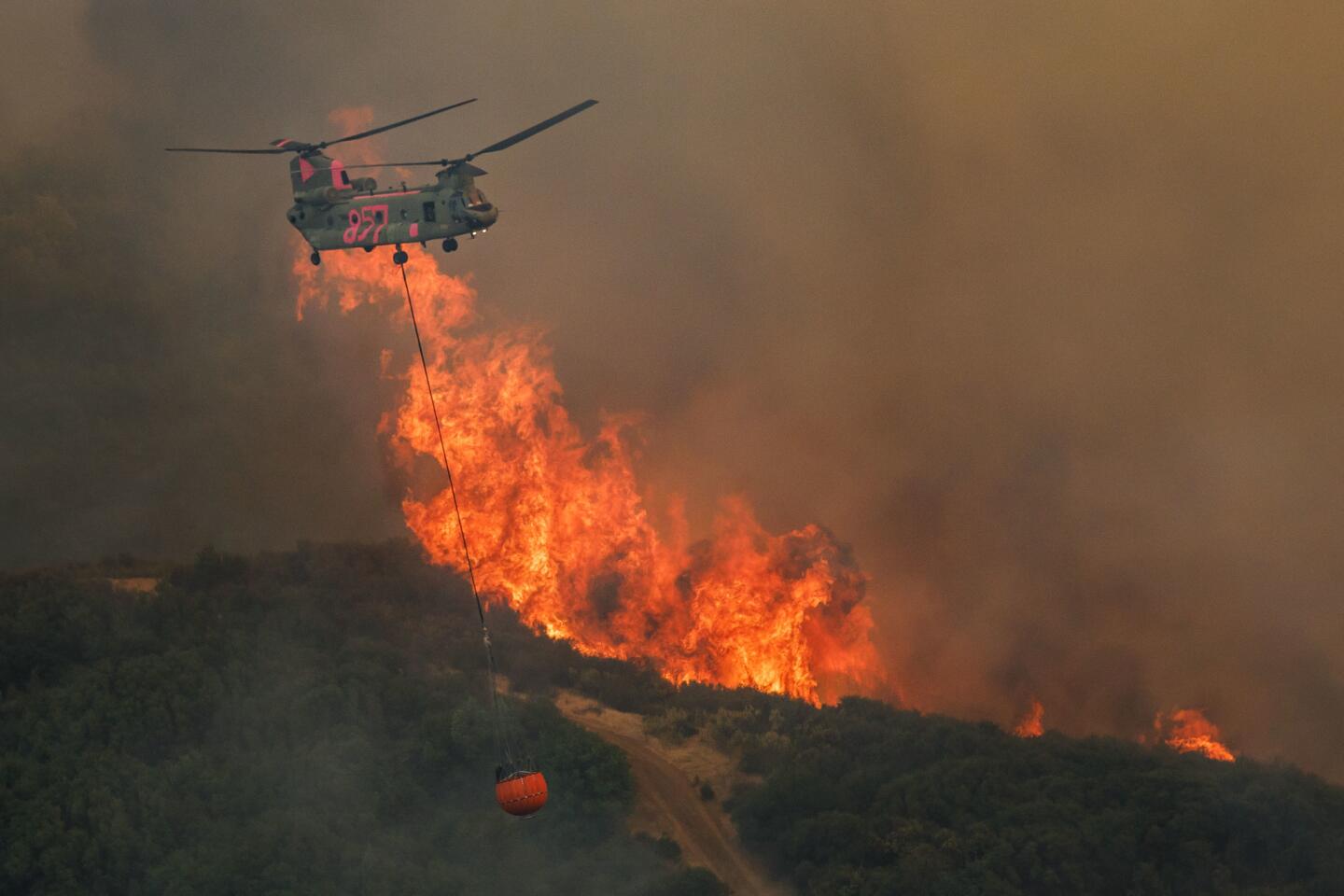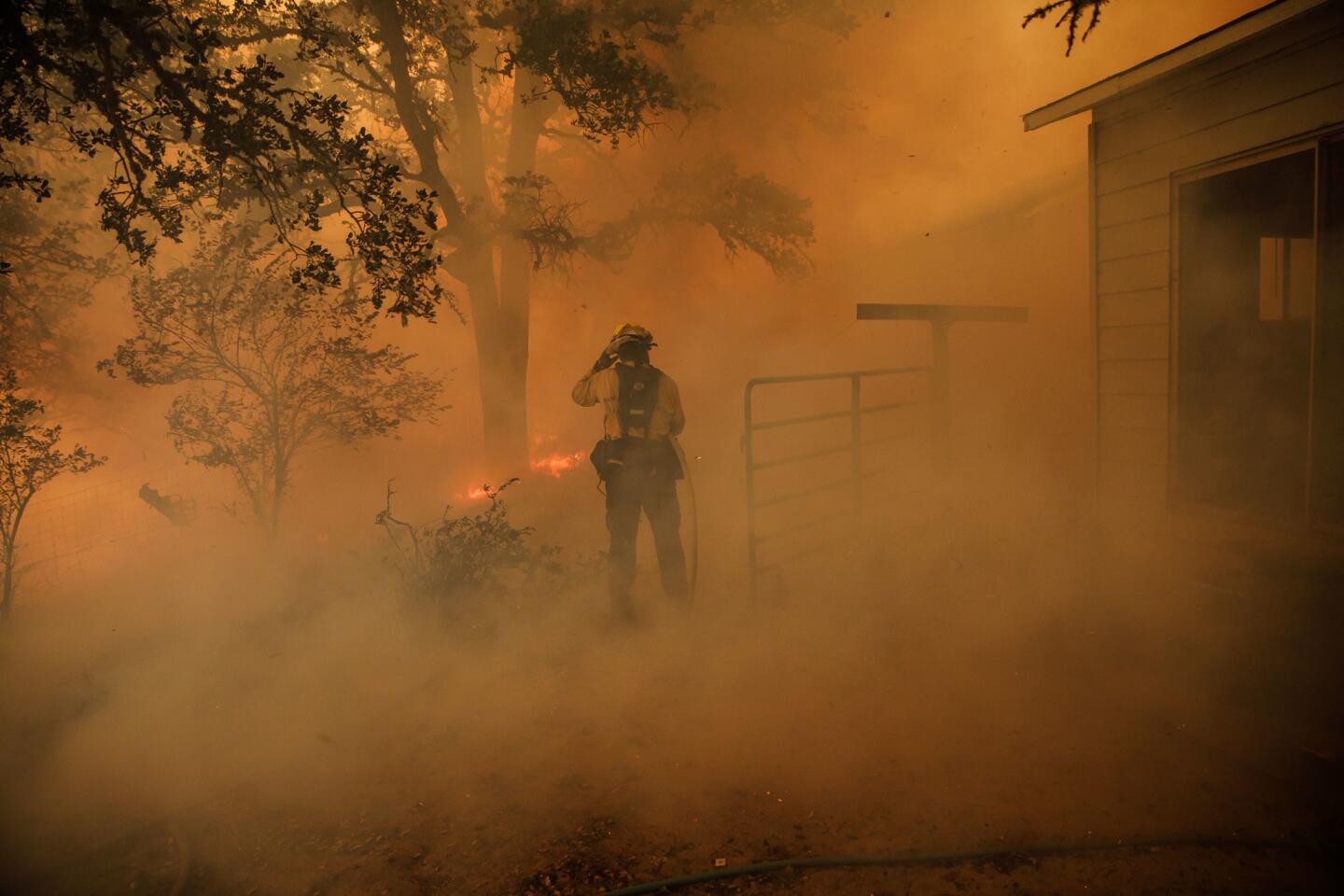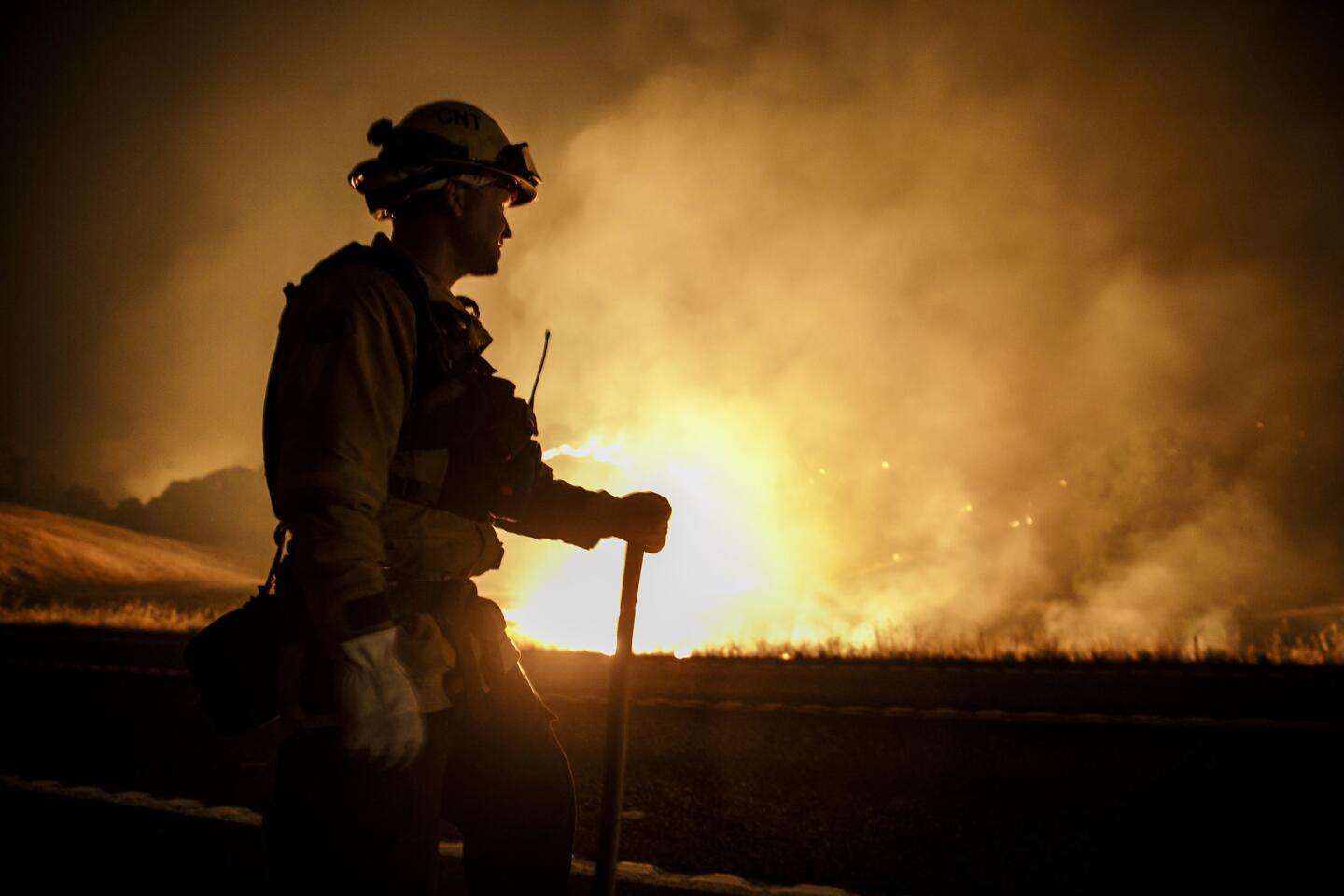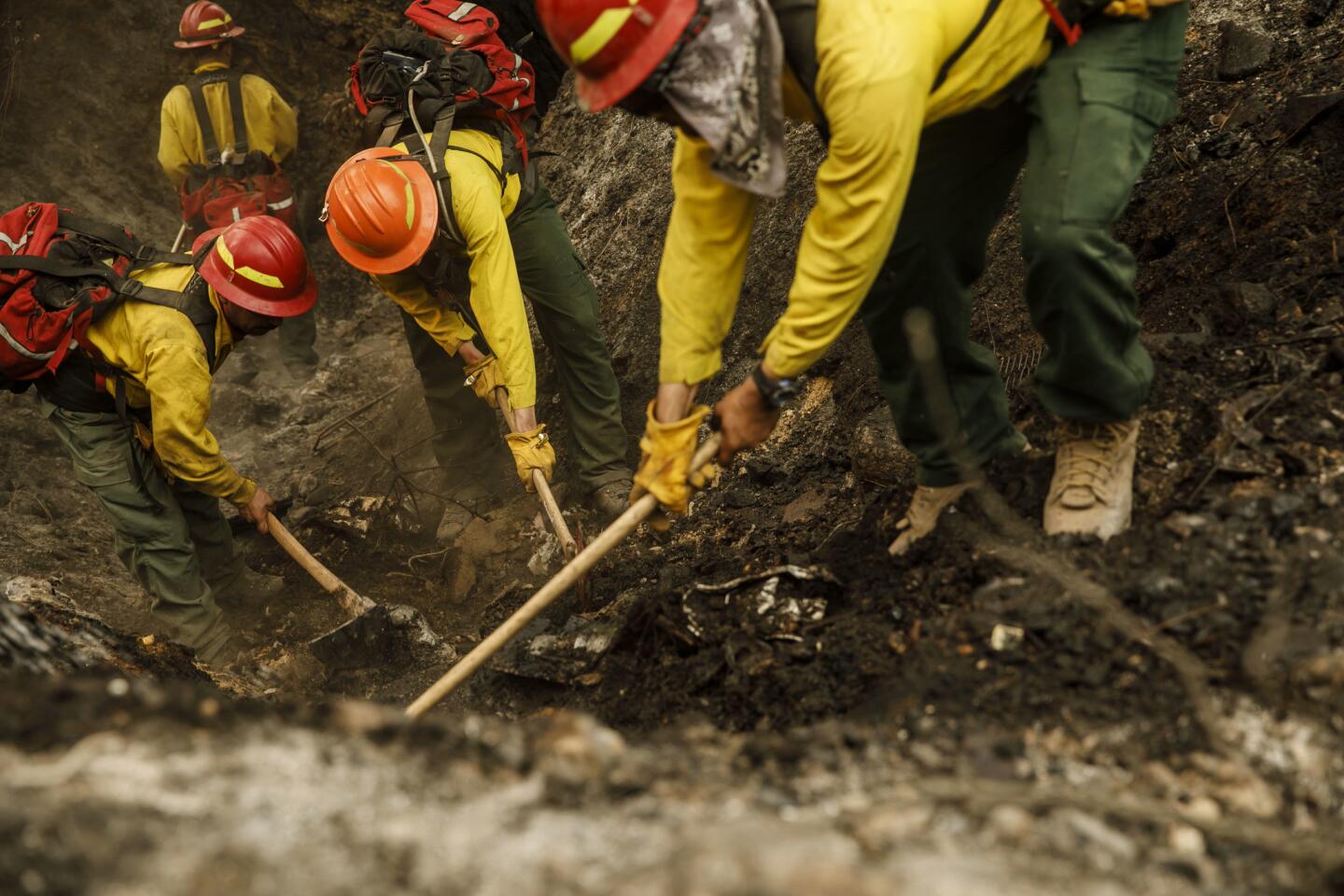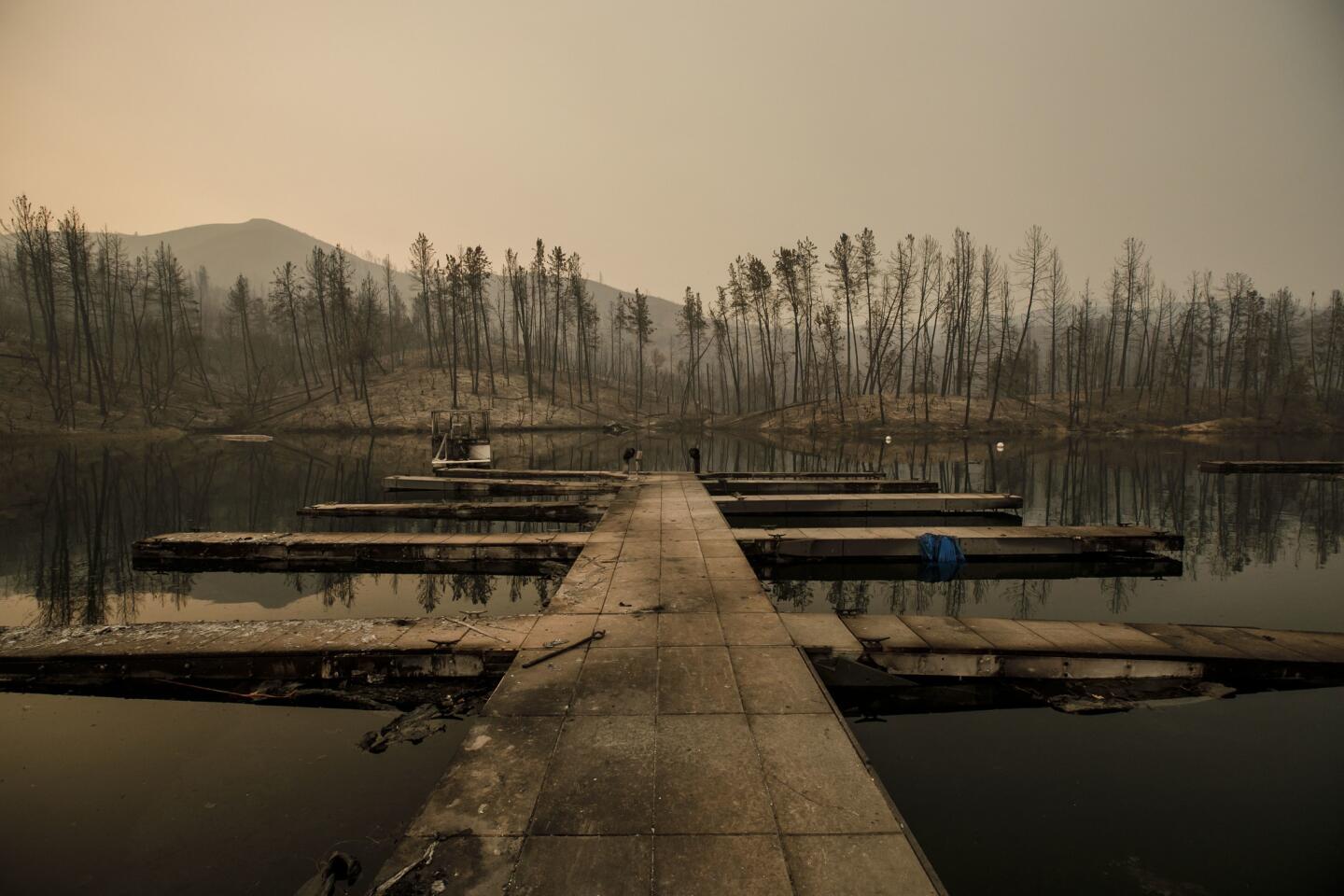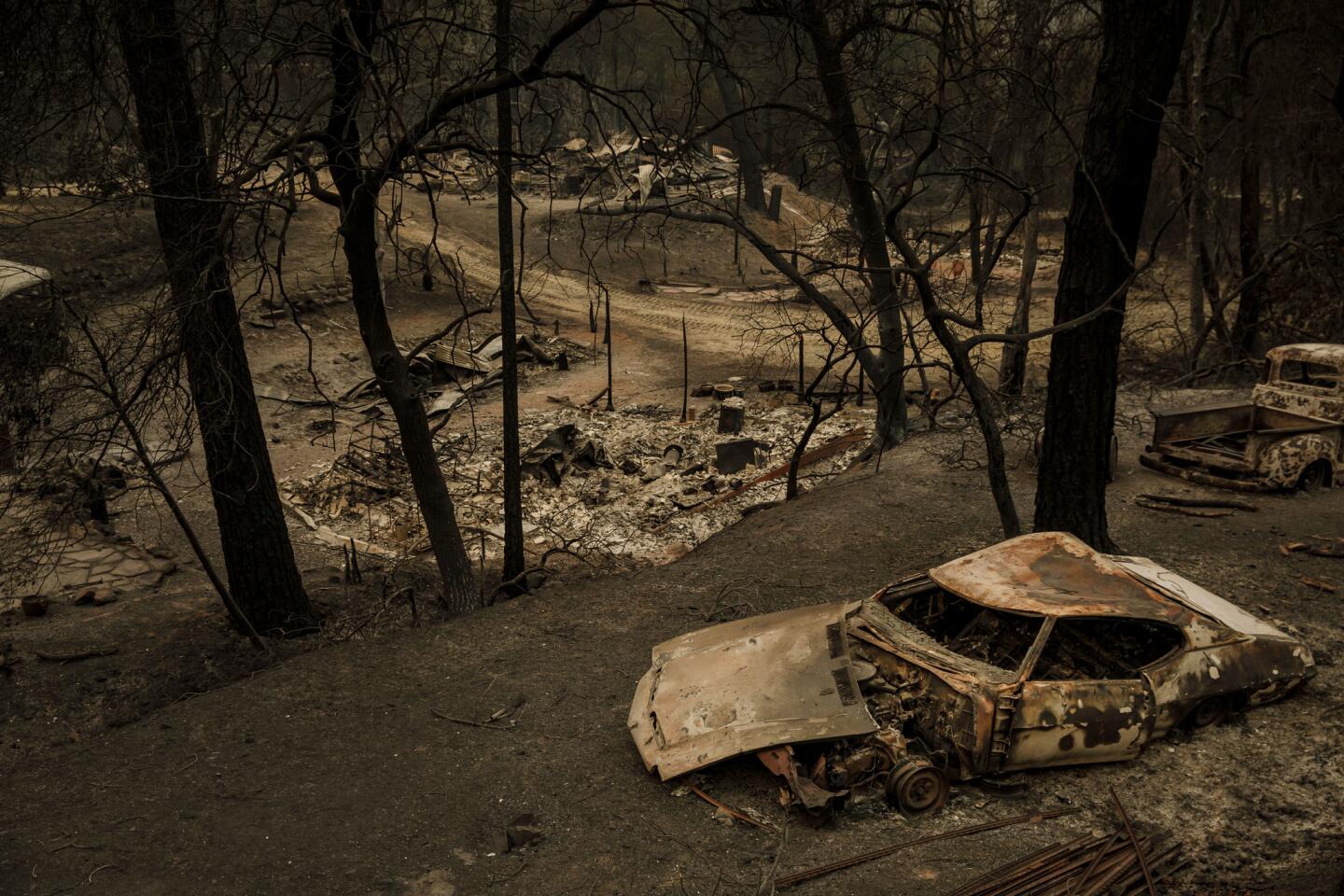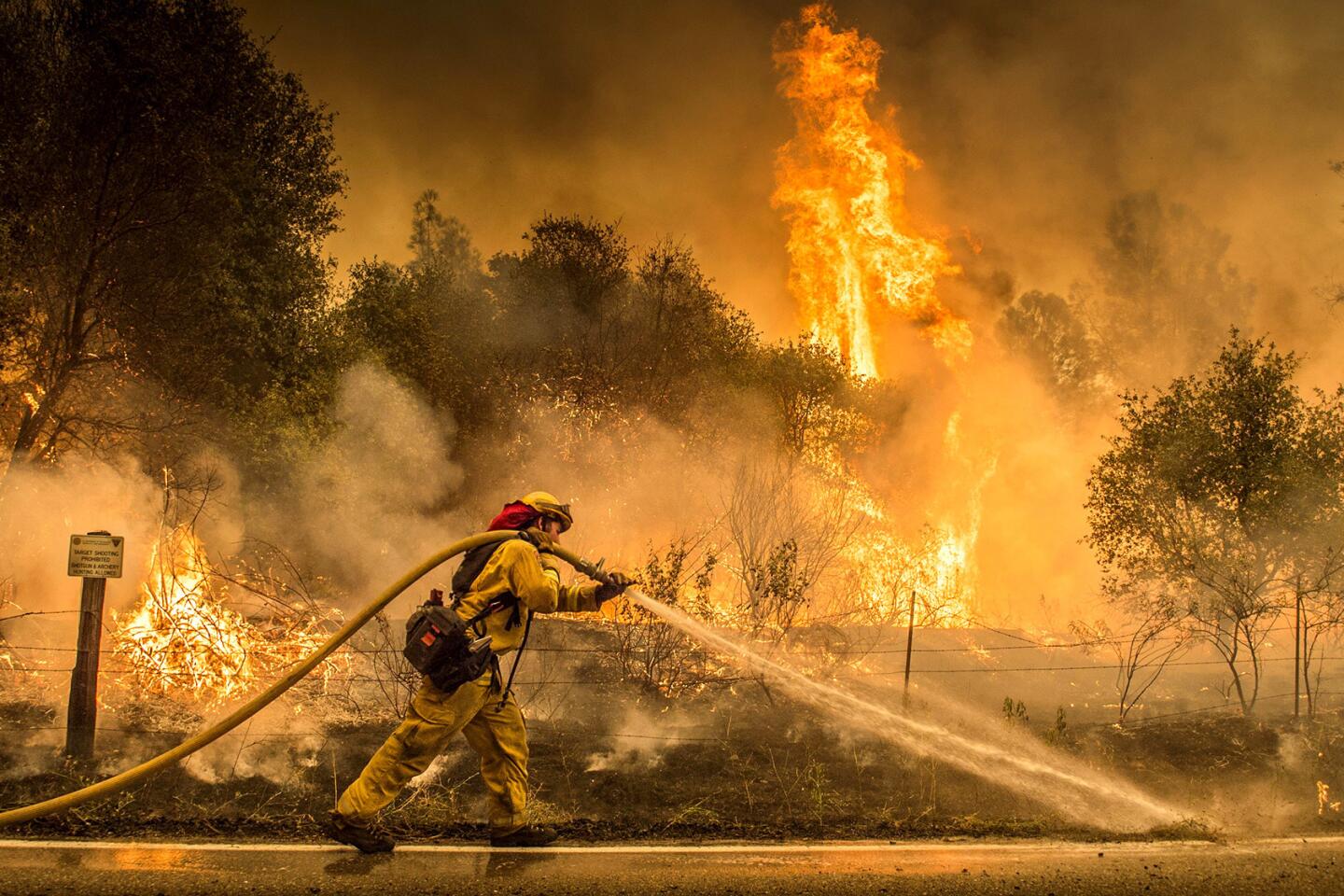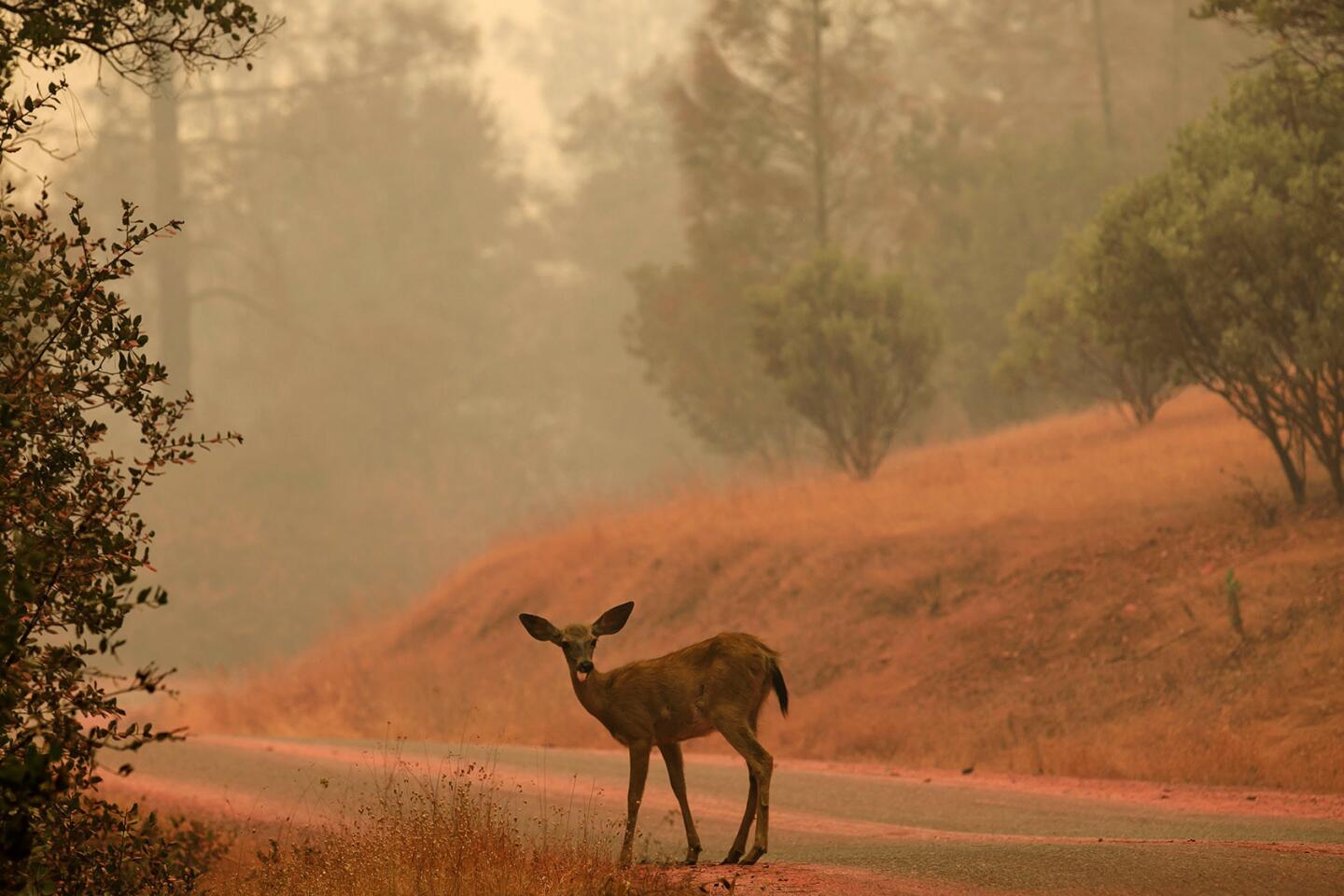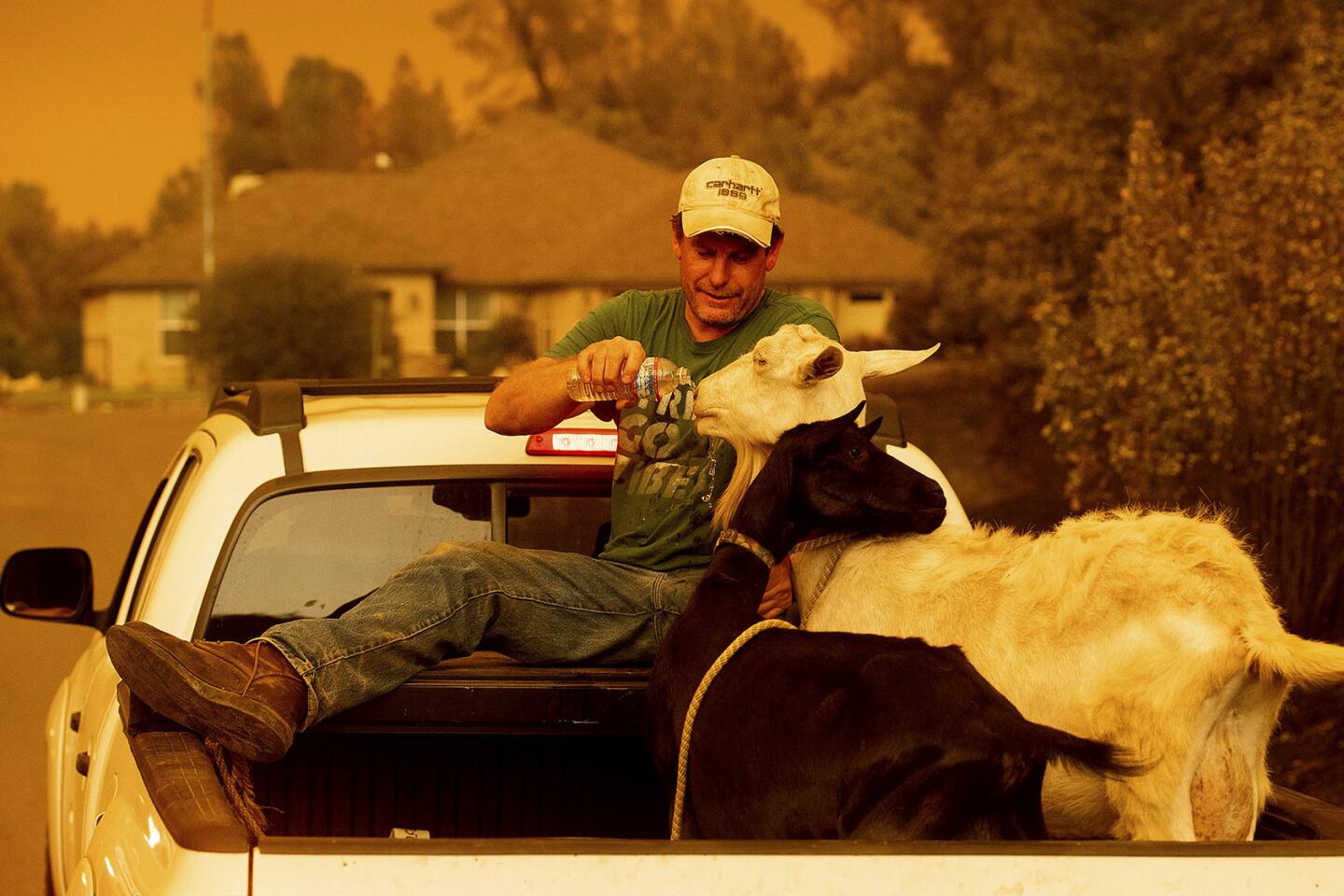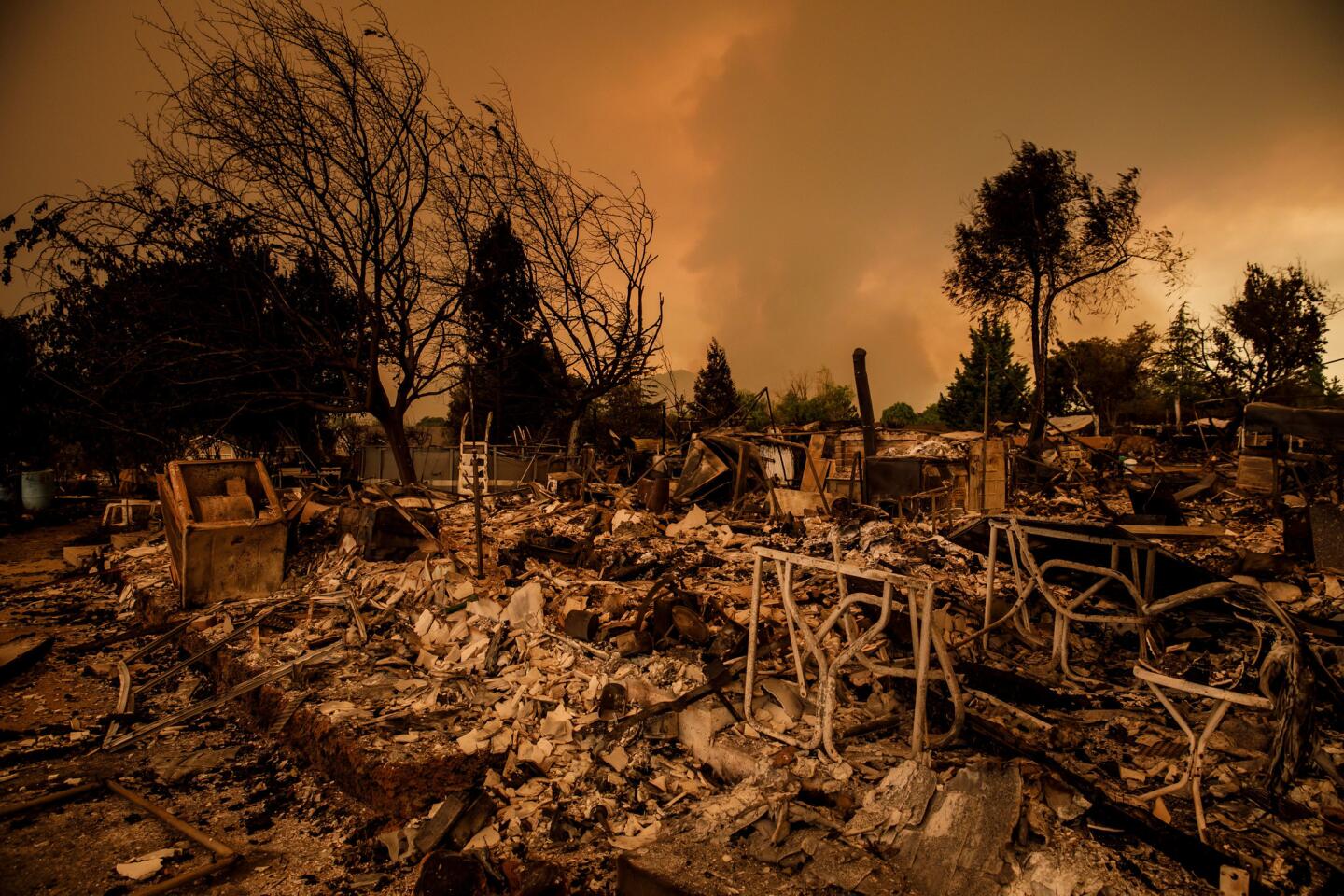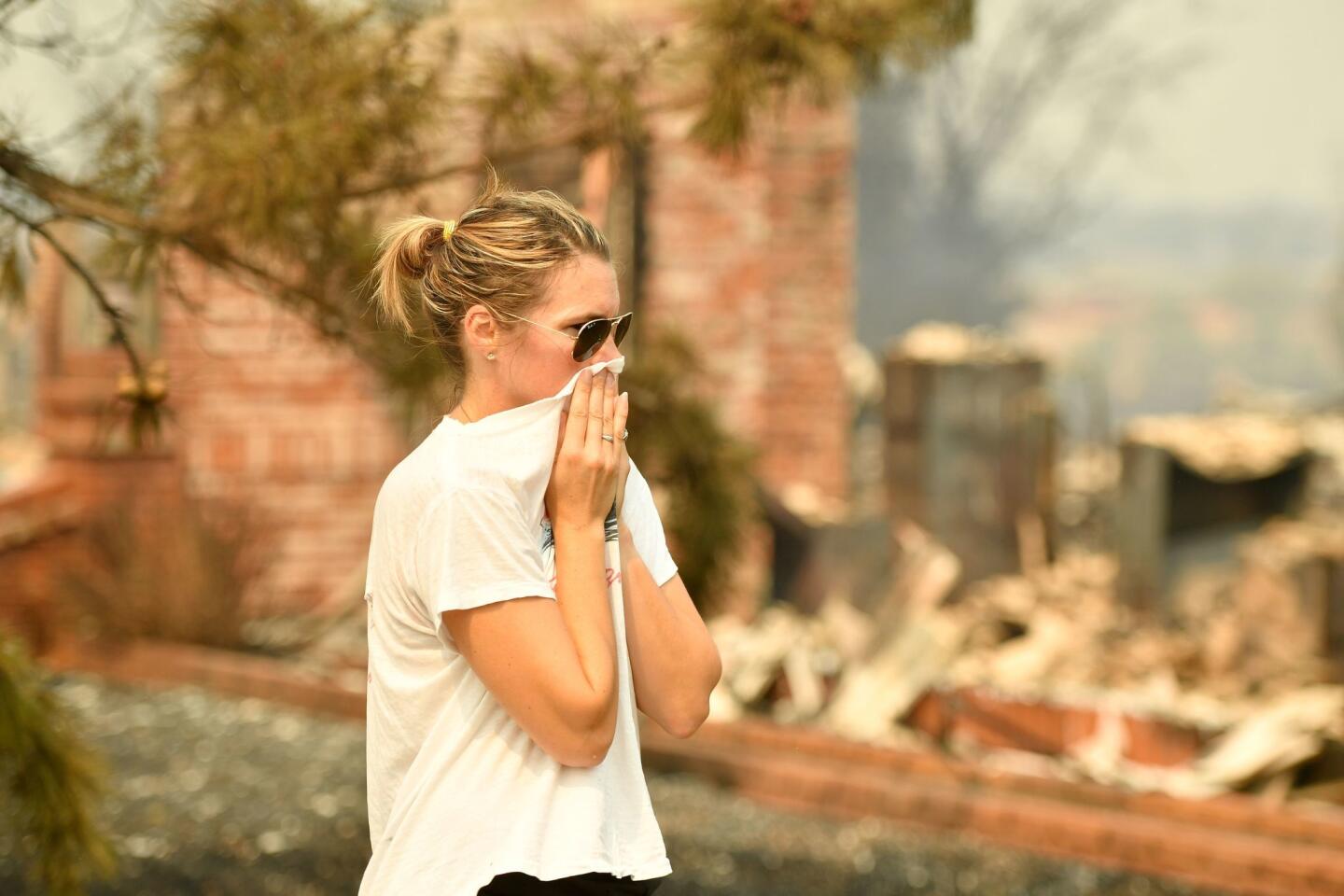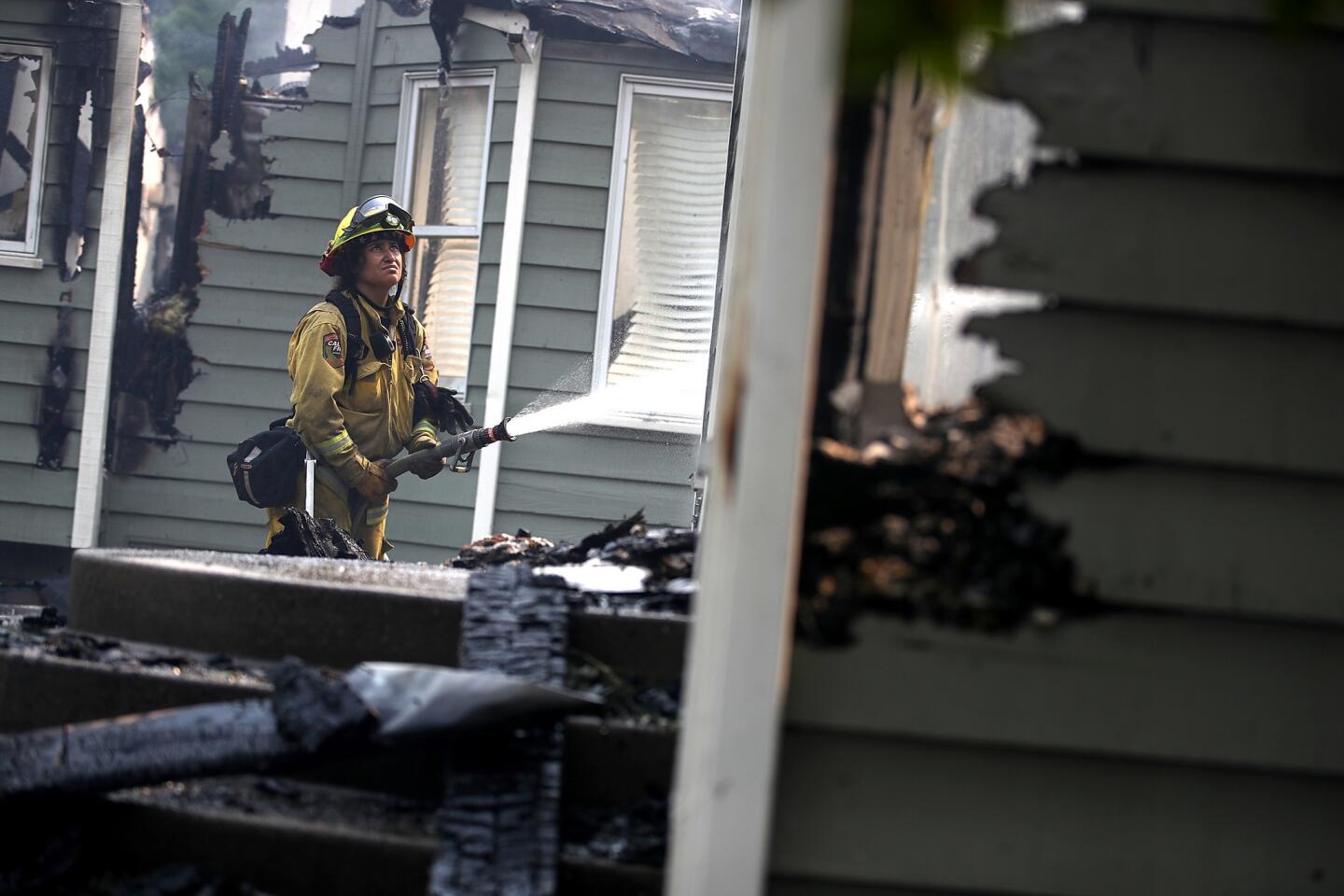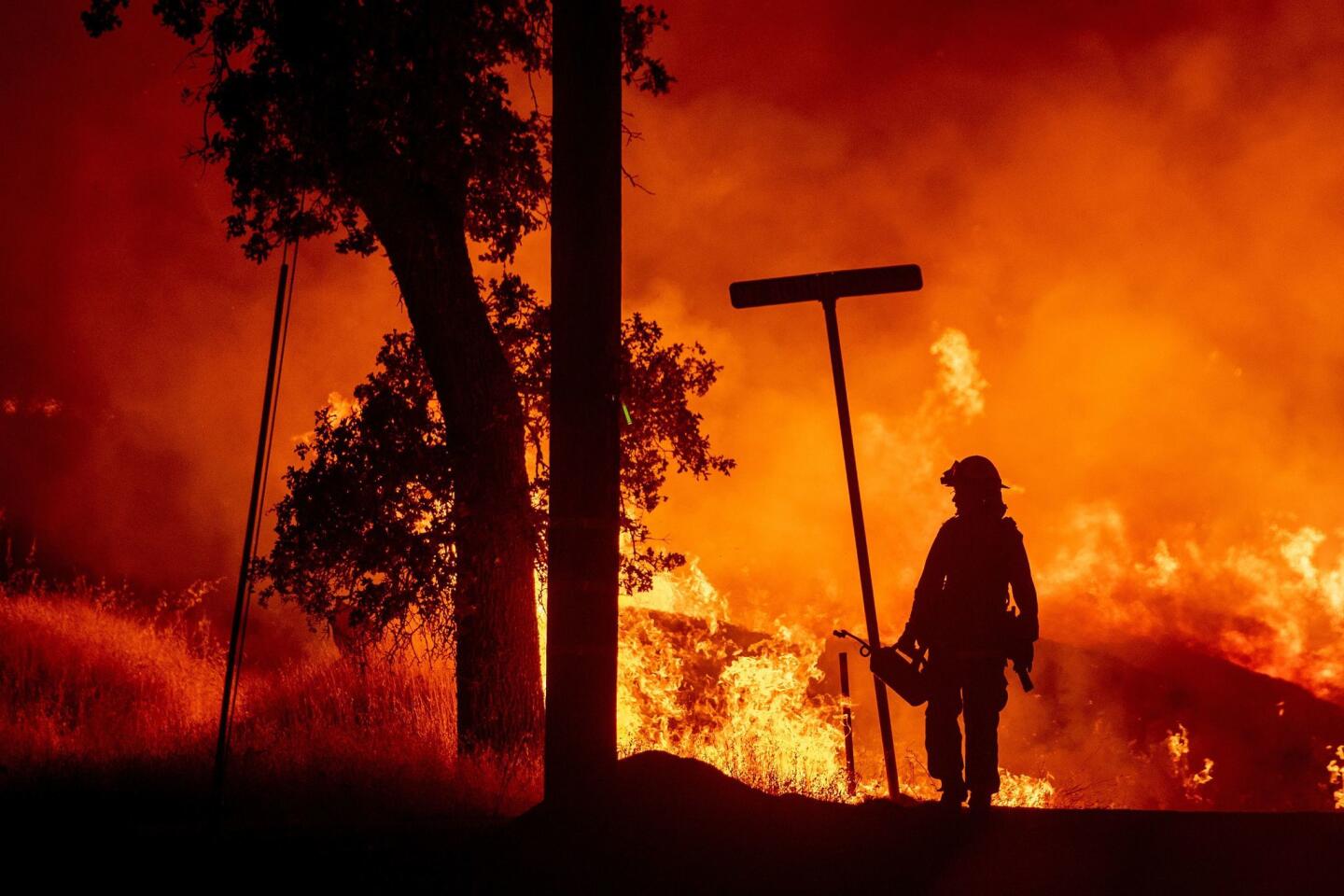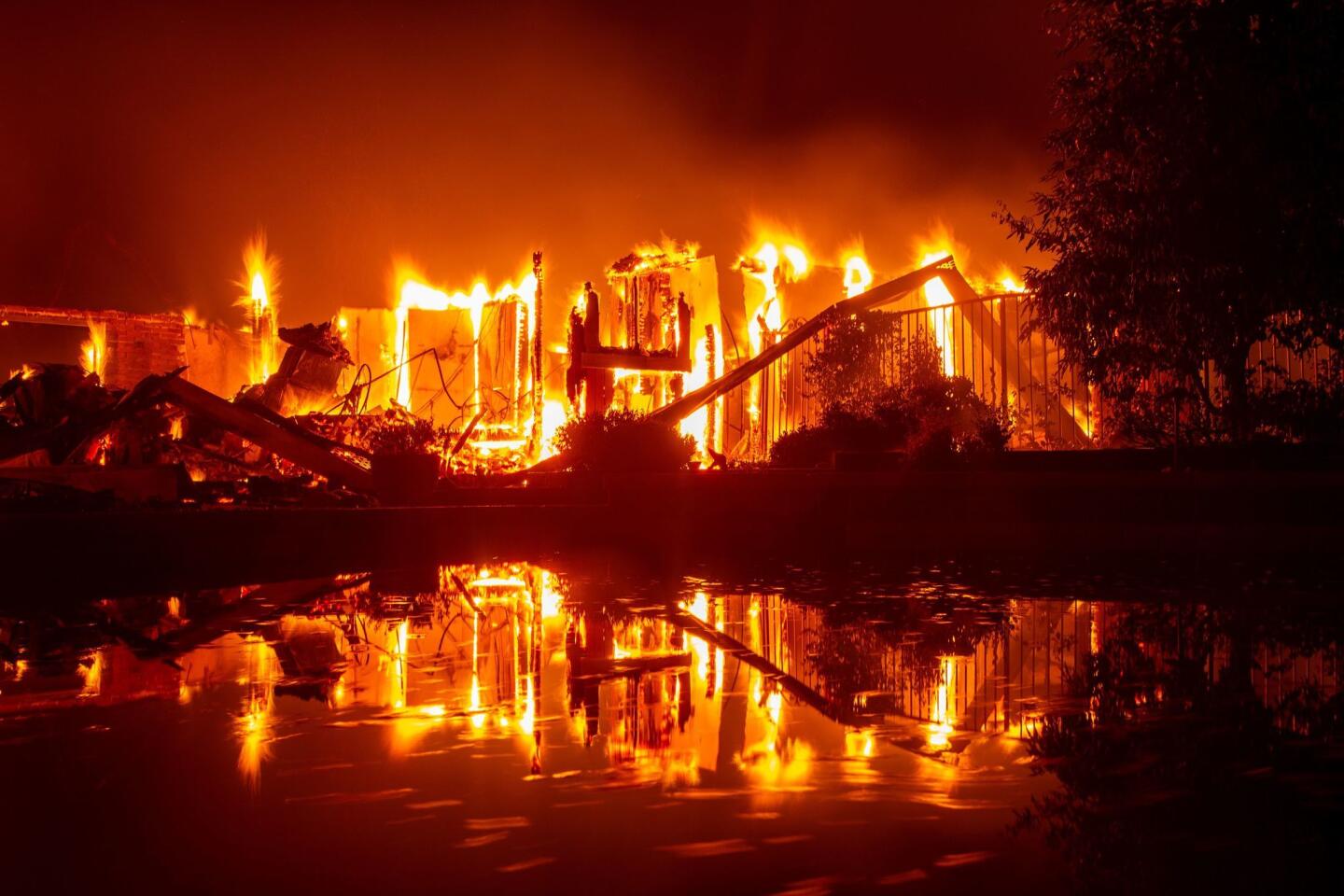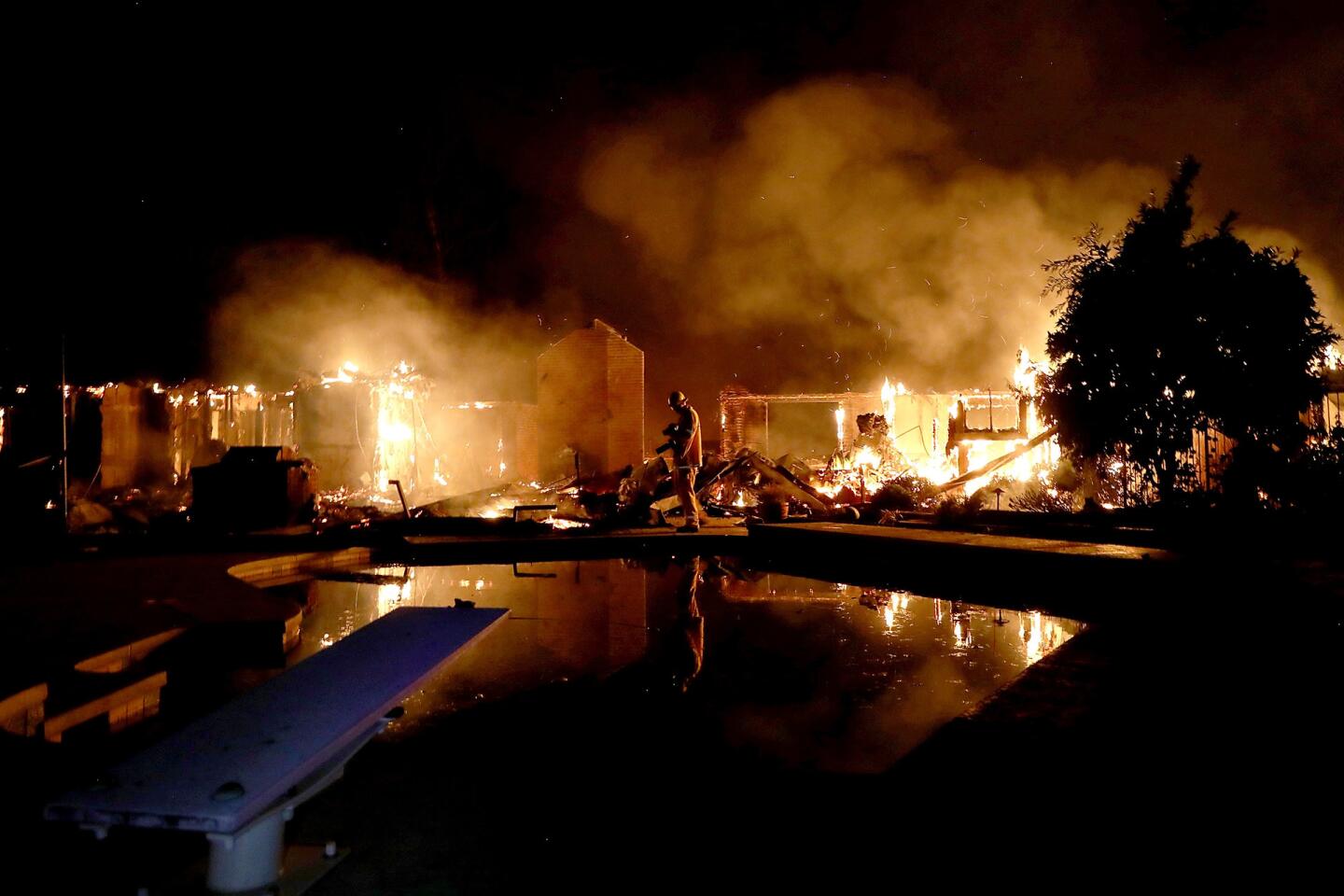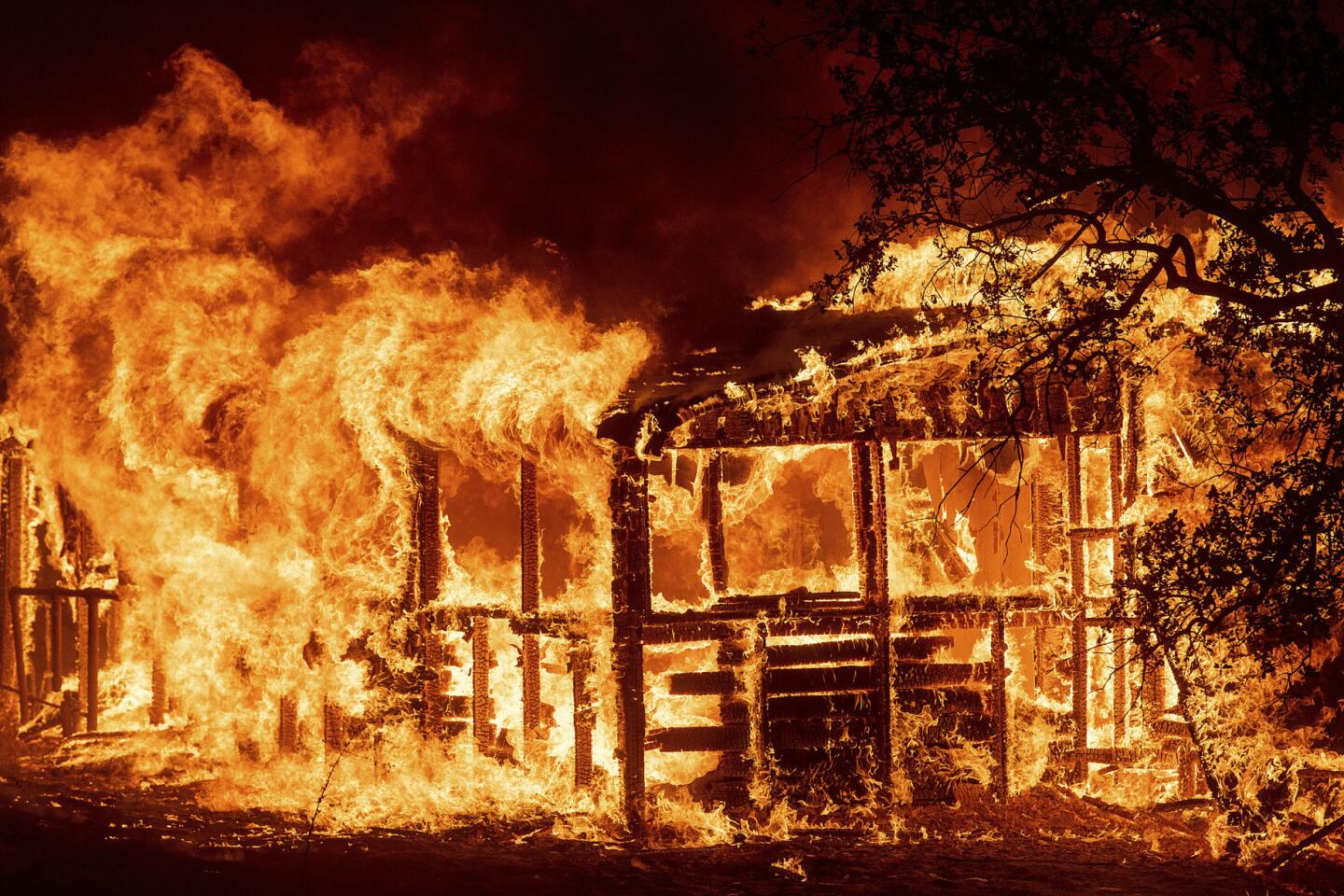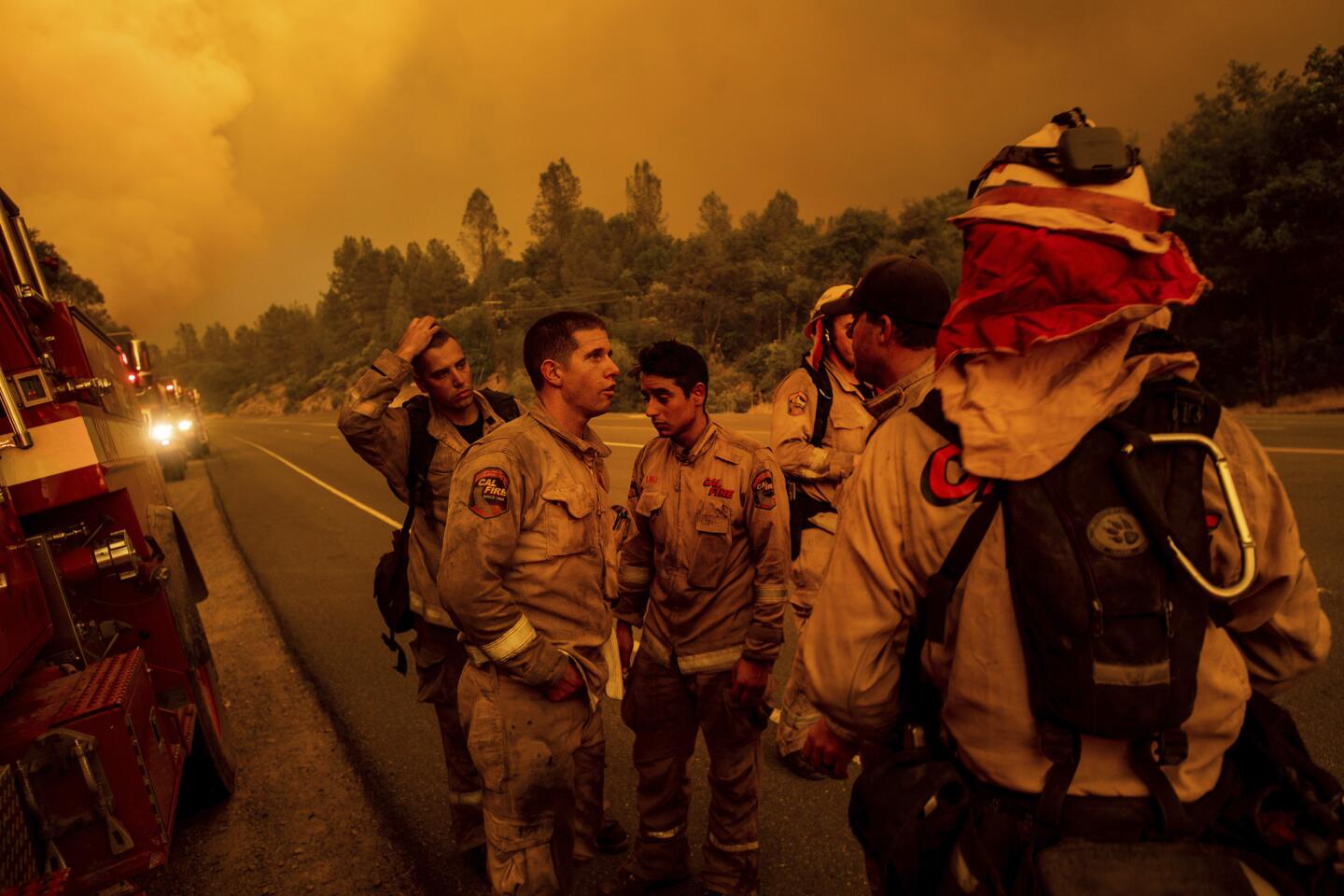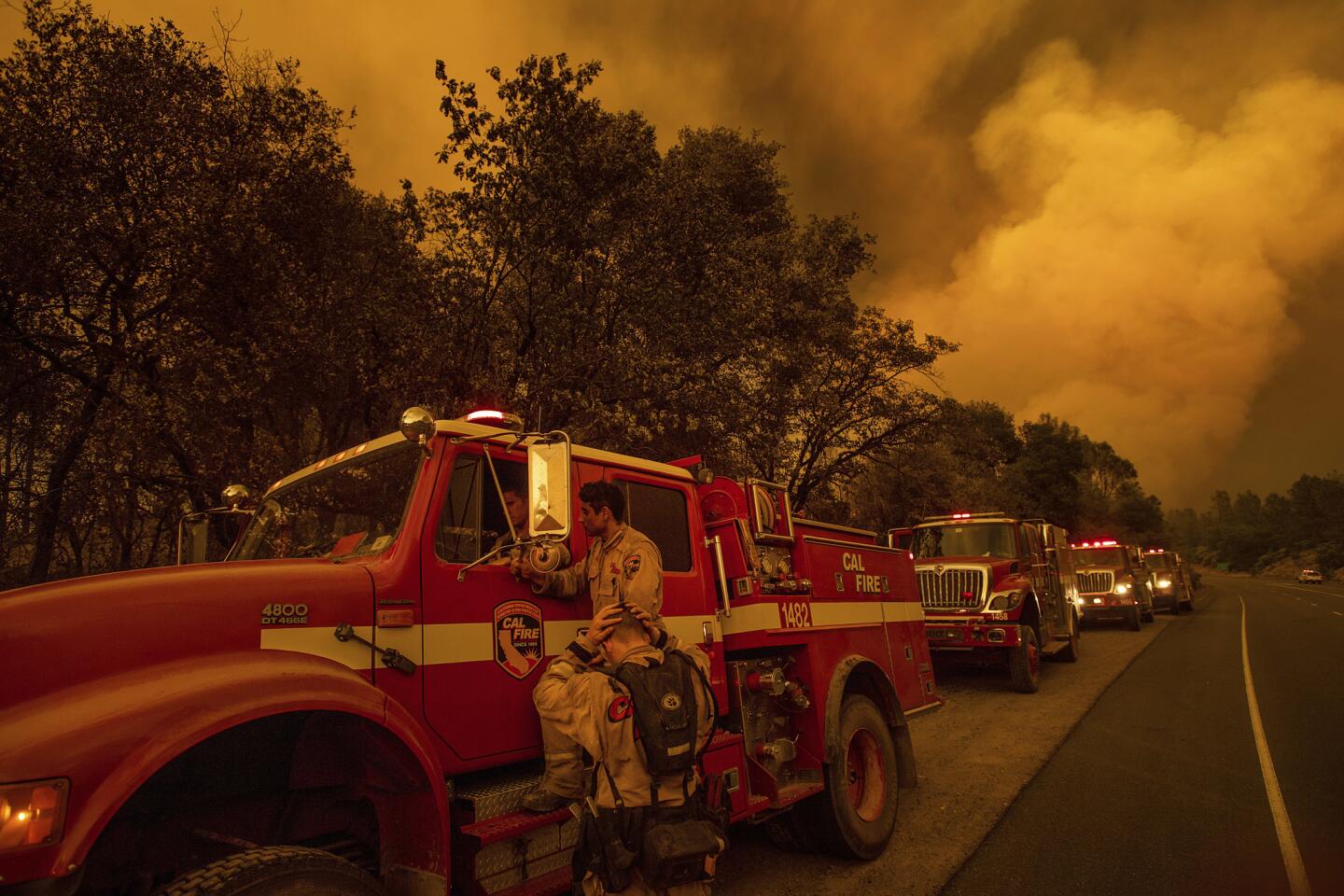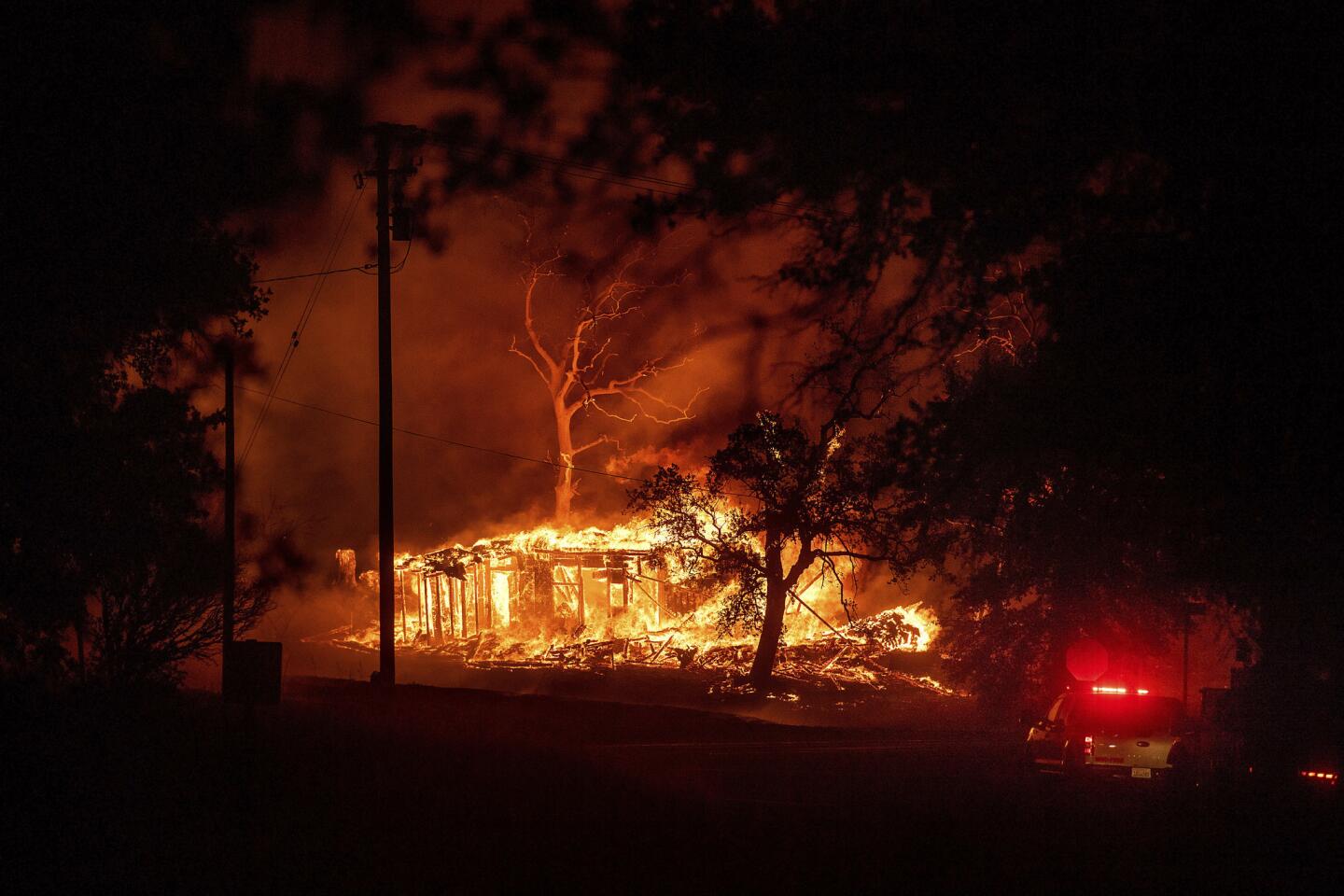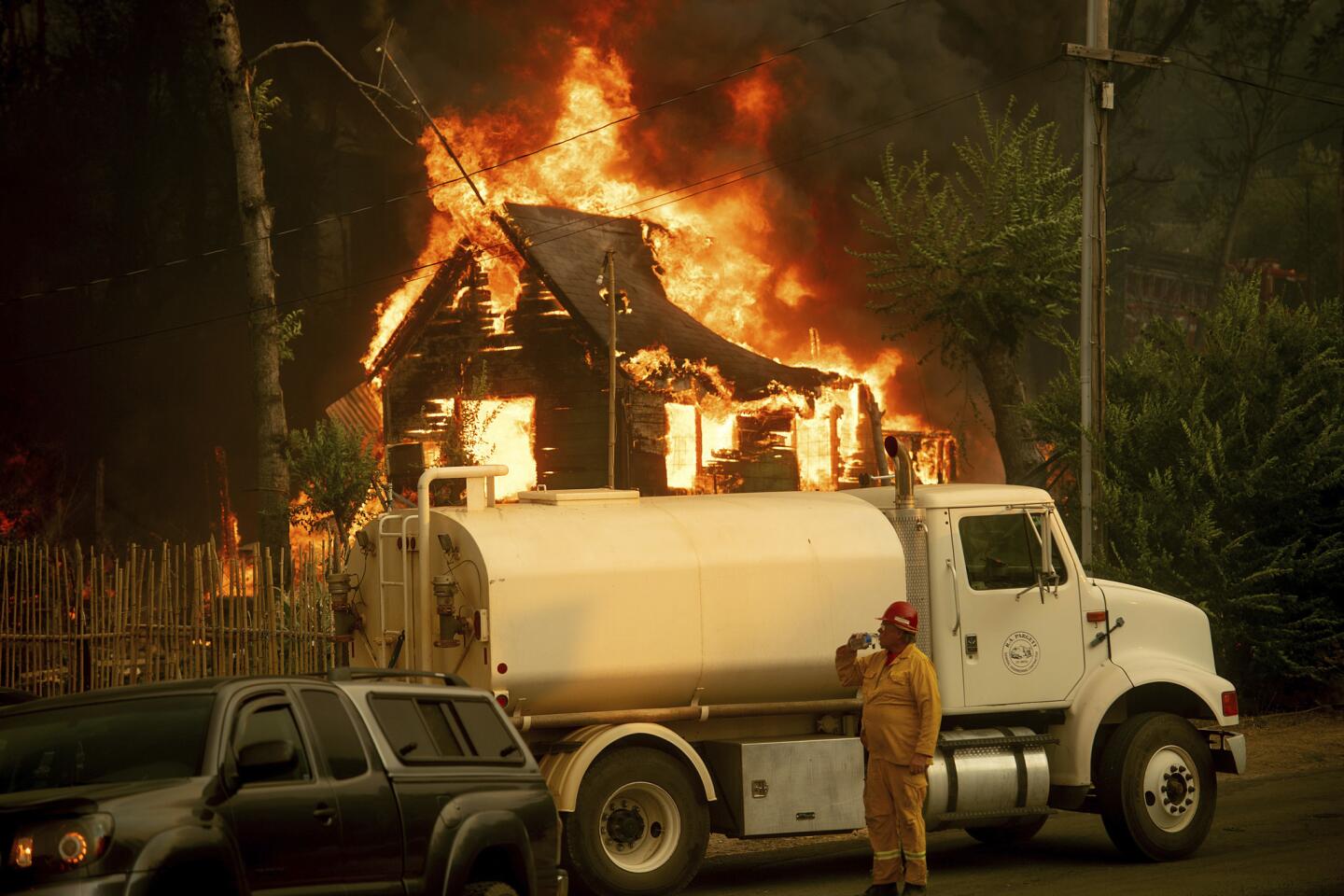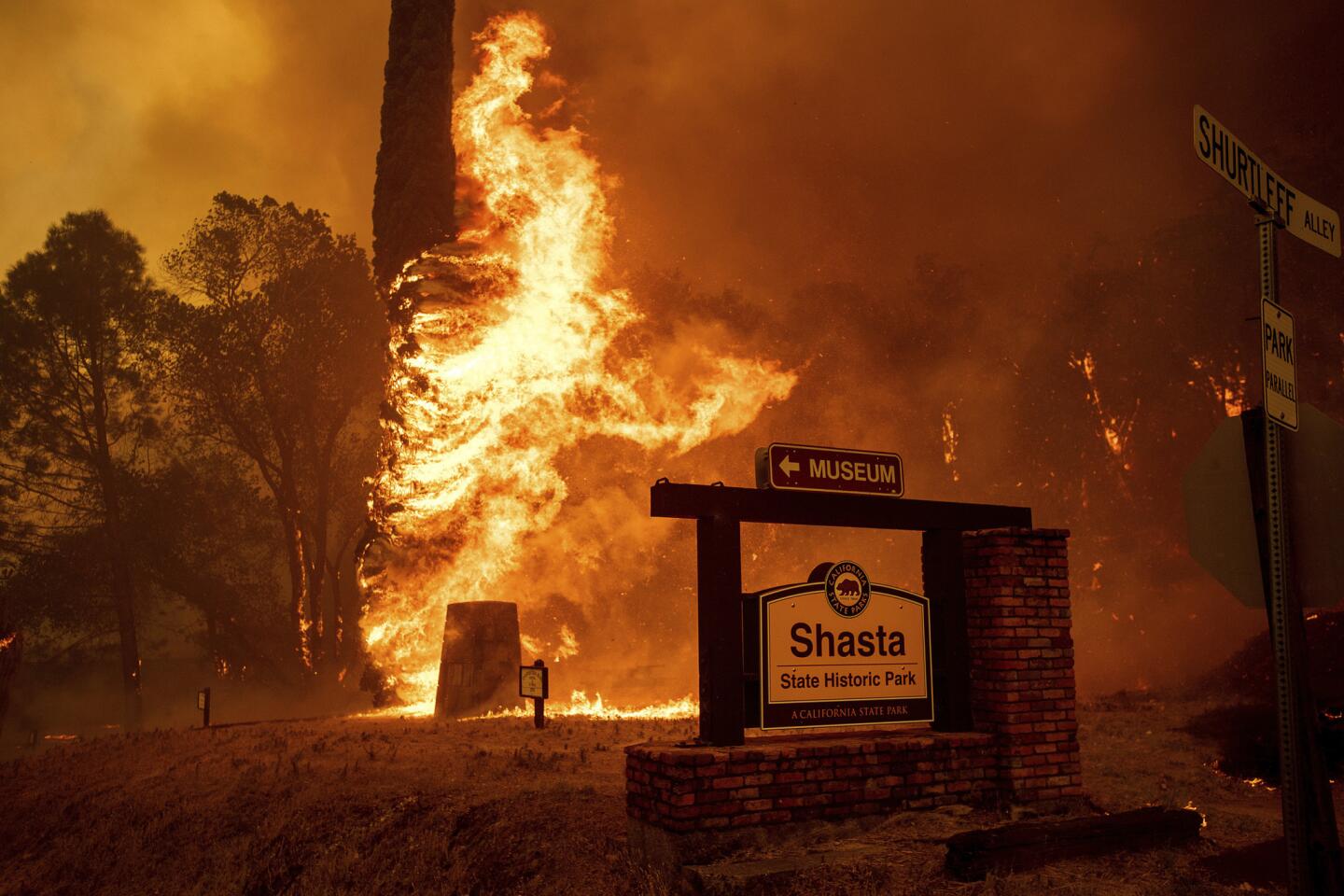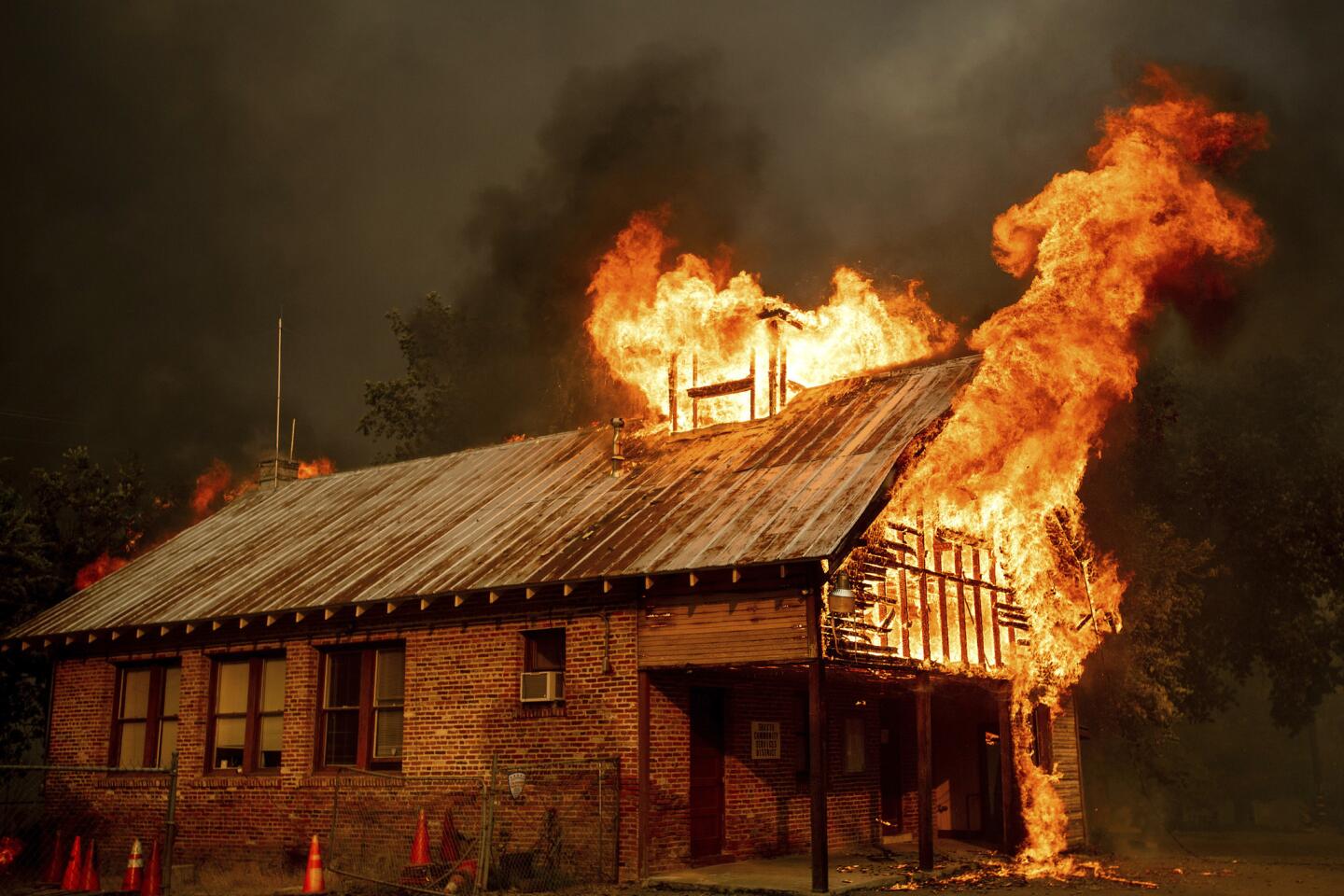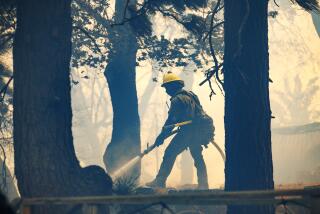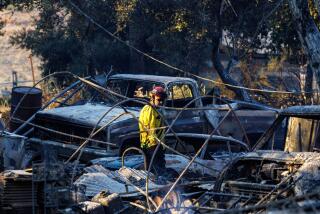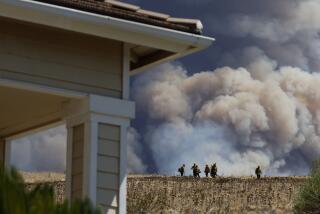Lost colleagues, exhausting work and ‘hotter than hell’: On the front lines of the Redding fire
Reporting from REDDING, Calif.— — It’s exhausting, dangerous and seemingly endless labor: tracking down hot spots still smoldering in the sage and pine west of Redding, then ripping through thickets until axes and shovels turn over the bare earth needed to form a firebreak.
But most of all, it is terribly hot.
Just ask the dirty and weary groundpounders, who have been attacking the Carr fire in the Shasta-Trinity National Forest all week, beating back flames with hand tools and hoses where the smoke is so thick that breathing is difficult, temperatures soar above 100 degrees and the relative humidity hovers at a parching 15%.
Brian Rodriguez, 22, of Moreno Valley, tried to pace himself as he heaved aside shovelfuls of leaves and chopped roots while humming to the tempo of Johnny Cash’s rendition of “John Henry.”
“But it still gets hotter than hell,” said Rodriguez, part of a California Conservation Corps crew assigned to cut a defensive line 4 feet wide and 10 miles long.
Did you evacuate for a California wildfire? Tell us what you took with you »
Rodriguez and the other 14 members of his crew were starting a 24-hour shift in one of the last patches of woodlands where the Carr fire still rampaged, threatening the modest wood-framed homes and businesses of Lewiston and nearby French Gulch.
Their workday began at sunrise at a sprawling base camp south of Redding, where 3,600 firefighters from as far as Florida gathered to combat a blaze that has already destroyed at least 818 homes and burned more than 110,000 acres.
The mood is at times somber.
Firefighters and law enforcement are paying tribute to eight fatalities reported from blazes burning in Shasta County and near Yosemite National Park by wearing black mourning bands on their badges.
“It’s been a very tough month. Four firefighters lost their lives, along with four civilians,” said Ken Pimlott, director of the California Department of Forestry and Fire Protection, as he ended a morning briefing at the base camp Tuesday.
“Pace yourself,” he added. “This job will get done.”
The Carr fire is the largest and most destructive of 17 major blazes roaring across the state that are stretching resources to the limit in what fire authorities are already calling one of the worst — and earliest — fire seasons in decades.
MORE: Here’s where the Carr fire destroyed homes in Northern California »
Firefighters are resigned to more long hot struggles to come: A trend toward large, severe year-round wildfires has been brewing throughout California and across the Western U.S. for over a decade, according to the National Interagency Fire Center in Boise, Idaho.
California fires no longer seem to arrive only in August and September. More massive conflagrations are spawned year-round by a confluence of familiar factors: drought, withering heat, gusting winds, dense brush, runaway campfire, vehicle sparks, downed power lines and arson.
In 2015, about 80,000 acres burned statewide between Jan. 1 and July 30, according to the National Interagency Fire Center. More than 180,000 acres burned during the same period the following year; 199,000 acres were consumed by that point in 2017.
So far this year, about 409,000 acres have been lost to fire, the agency said.
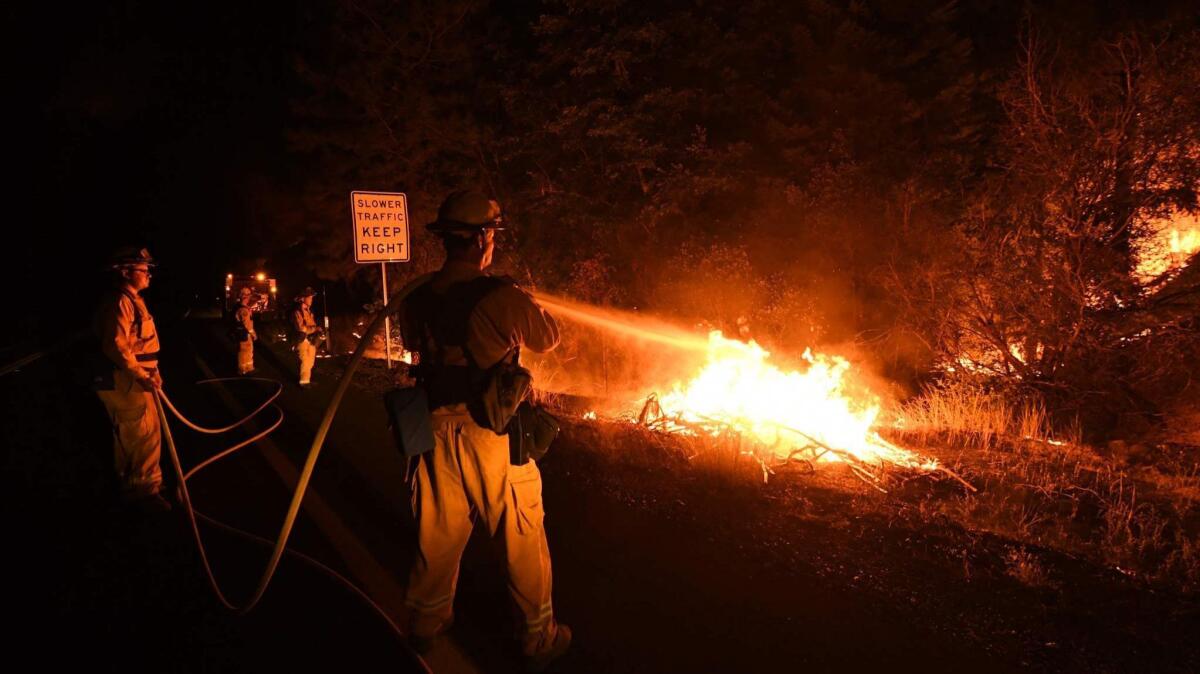
“There’s no end to these tragic fires now,” said Gabriel Lauderdale, a Cal Fire spokesman assigned to the Carr fire command post at a fairgrounds south of Redding. “I didn’t get home from the Thomas Fire [which burned more than 280,000 acres in Ventura and Santa Barbara counties last year] until Christmas Eve.”
Earlier in the week, fire crews were concentrating on areas where homes and other structures were in jeopardy. Now, with the fire 27% contained, the front is moving through sparsely populated valleys northwest of Redding that had been untouched by fire for decades.
Thick reddish-gray smoke hung over the region’s active fires like a lid on a pot because of a stubborn inversion layer, officials said.
Residents who defied evacuation orders sat on front porches and roadside retaining walls watching fire engines and trucks loaded with firefighters, bulldozers and cranes speeding past toward columns of smoke on surrounding slopes.
High on a ridgeline overlooking Lewiston, the California Conservation Corps crew led by Cal Fire Capt. Ben Sitter lined up beside an immense earthmover parked along a winding road.
“This is one of the few areas where fire is still actively devouring landscape,” Sitter, 45, said. “Our goal is to stop the flames from marching down mountain into the community of Lewiston.”
The crew was psyched up for the job at hand: chopping shrubs and stumps with axes, rolling boulders aside with pry bars, and clearing a smooth path that would be roughly 4 feet wide and grow longer by the minute.
Armed with shovels, axes and chain saws, they marched in single file up into a stand of Douglas firs more than 100 feet tall.
Ricky Williams, 21, of West Covina, planned to keep his stamina by sticking with the rhythm of a mantra: “We’re going to get through this. This will end.”
Brice Bennett, a spokesman for Cal Fire, would not go that far.
“I’m afraid nobody will be going home for a while,” Bennett said. “Looks like we’ll be hopscotching from one fire to the next.”
More to Read
Sign up for Essential California
The most important California stories and recommendations in your inbox every morning.
You may occasionally receive promotional content from the Los Angeles Times.
